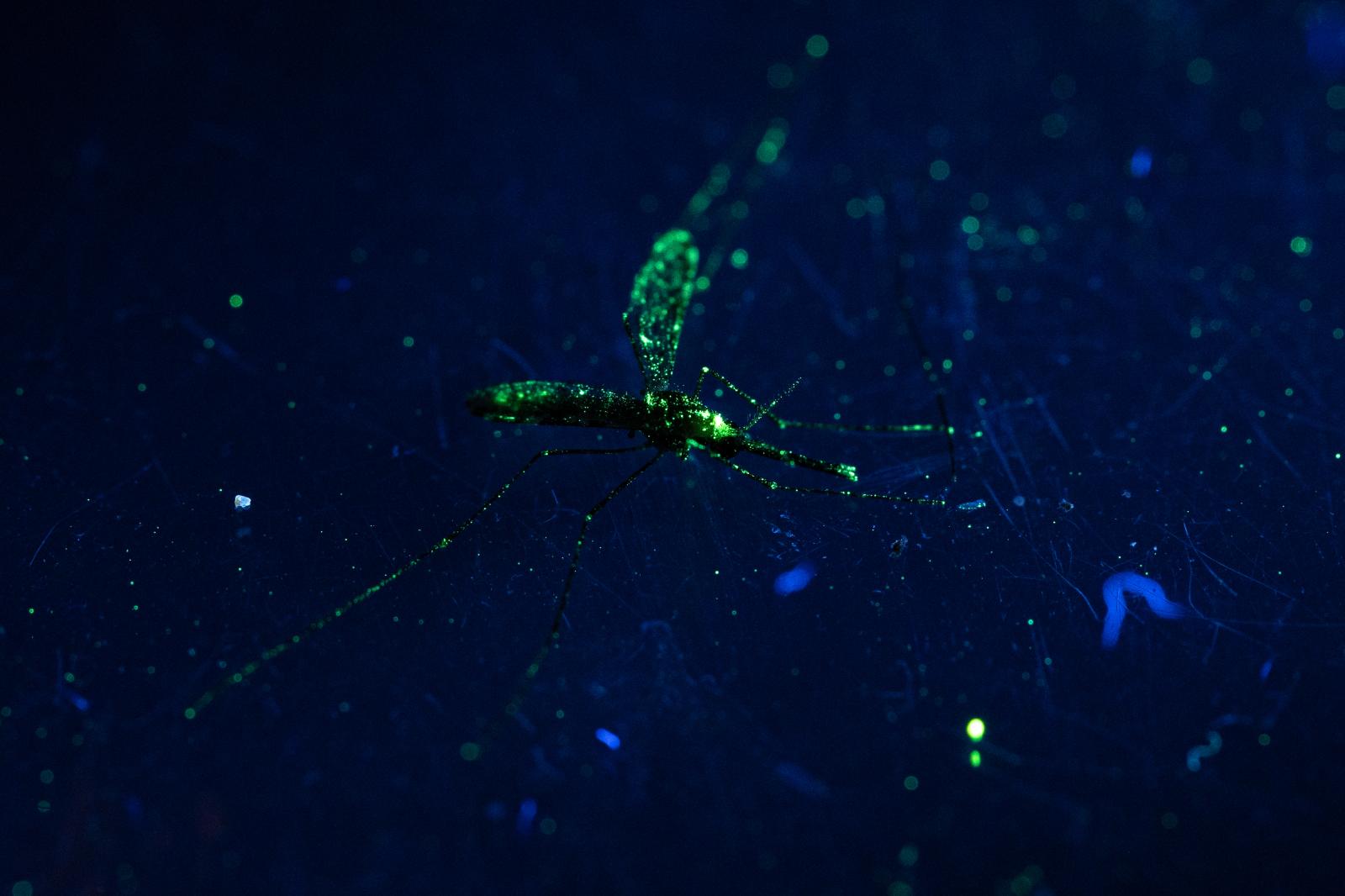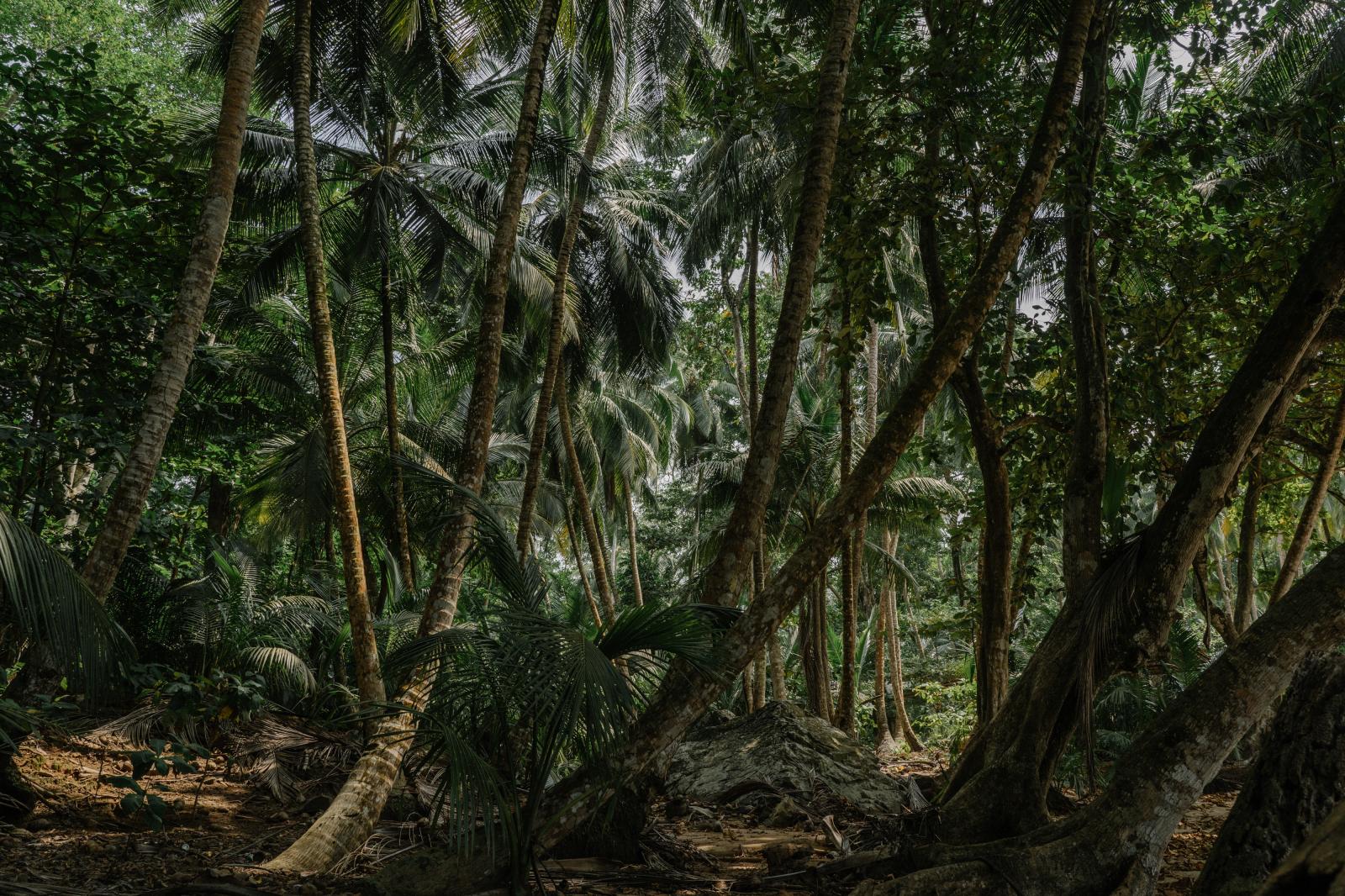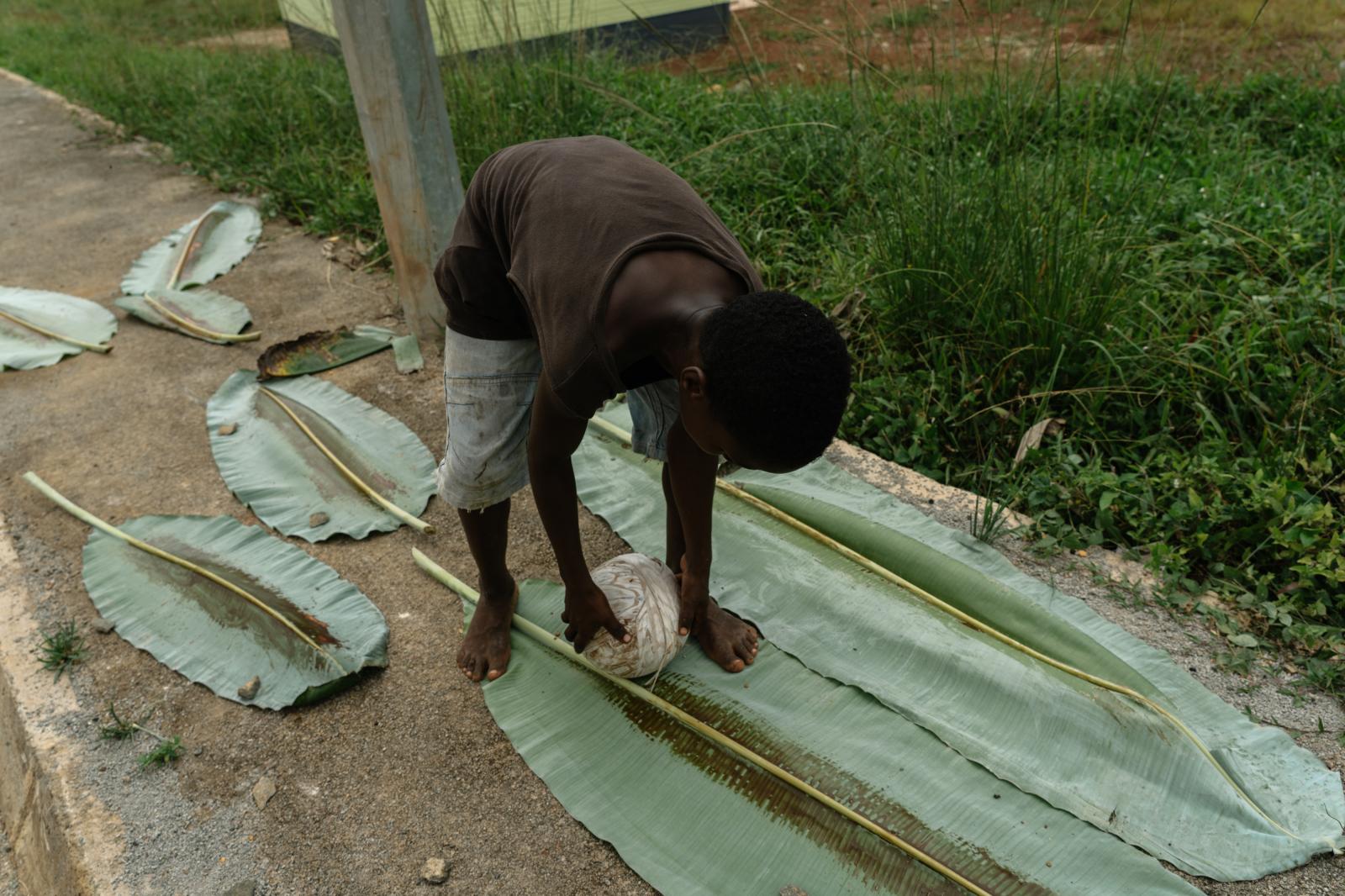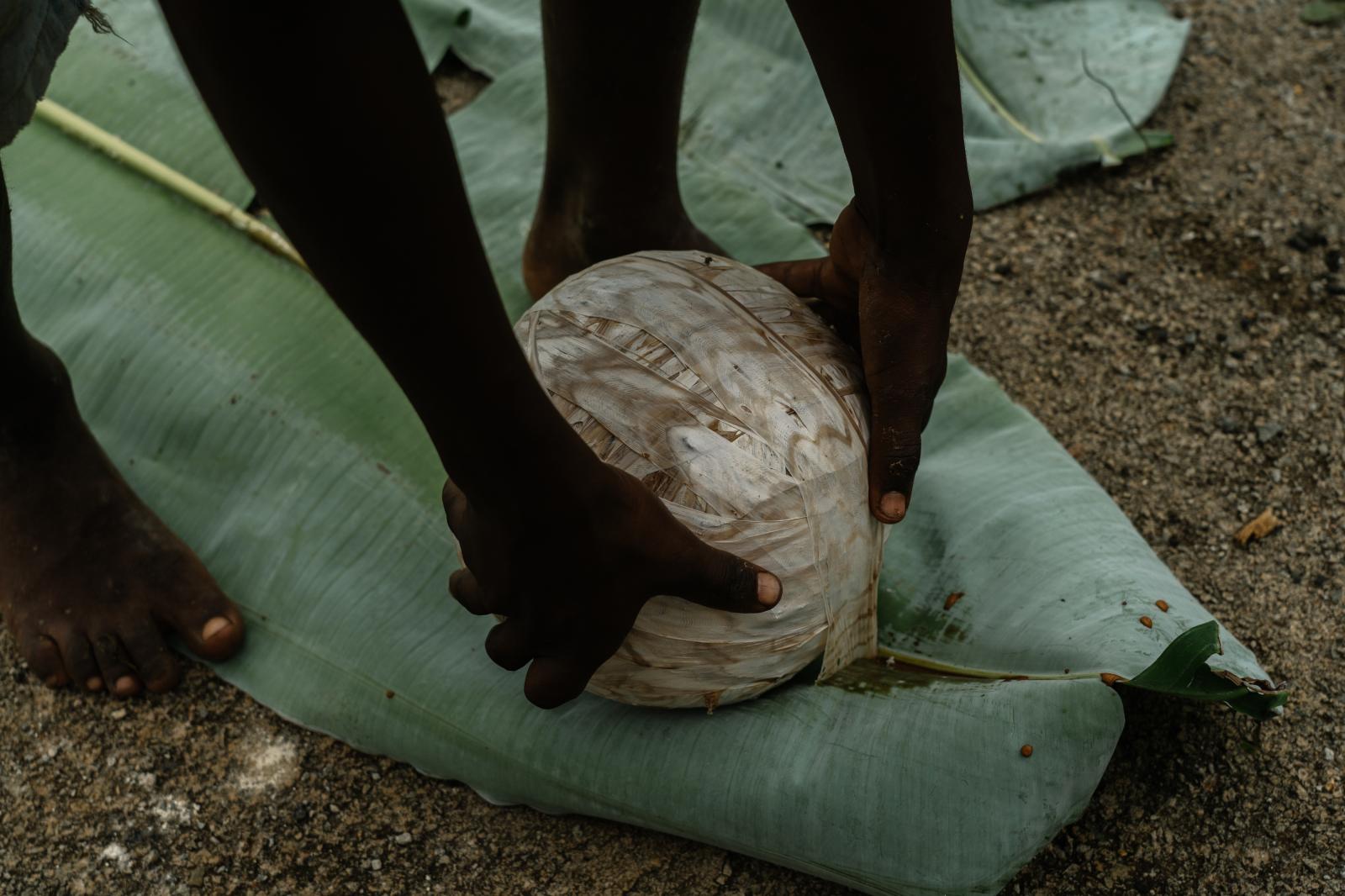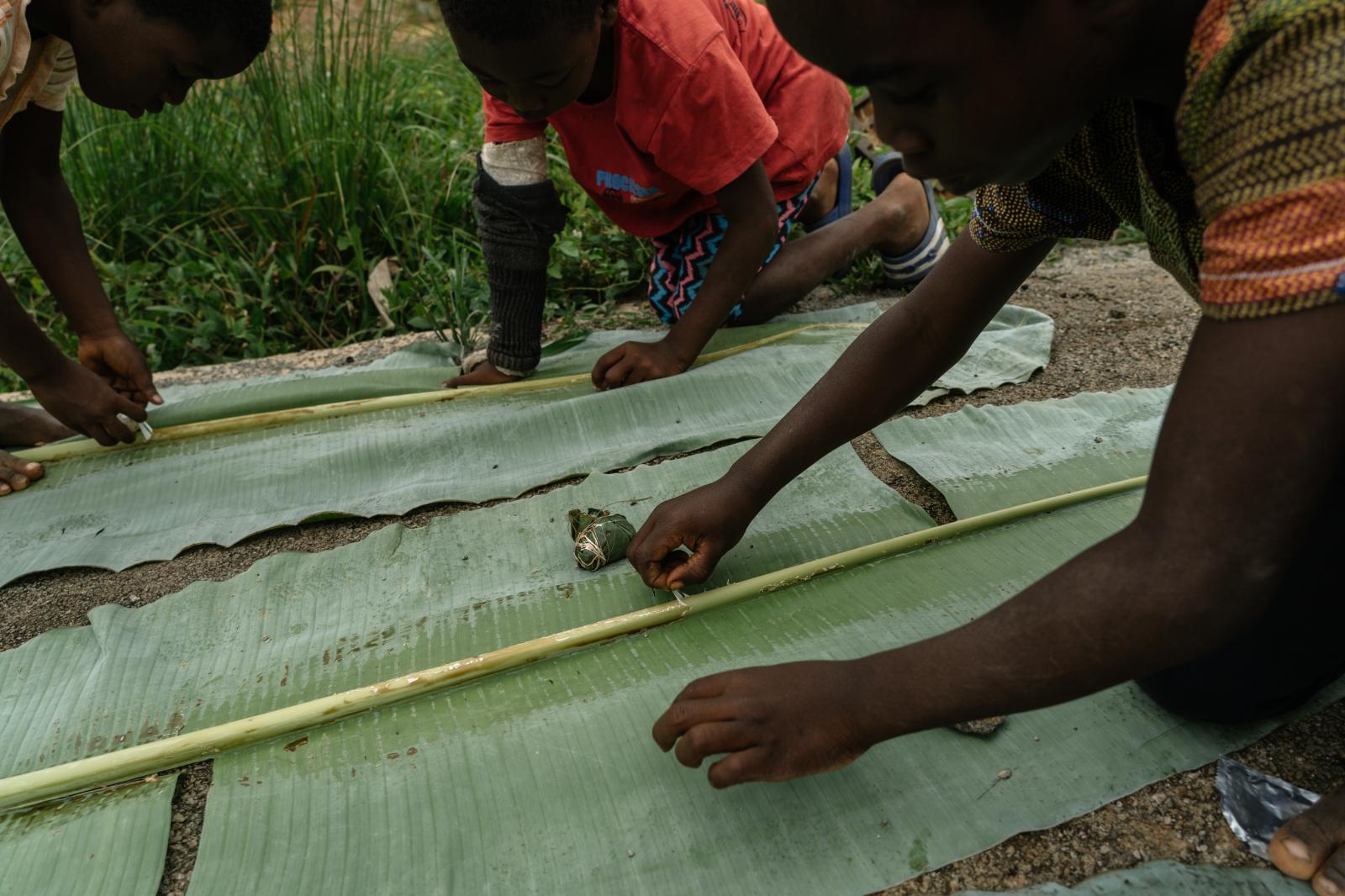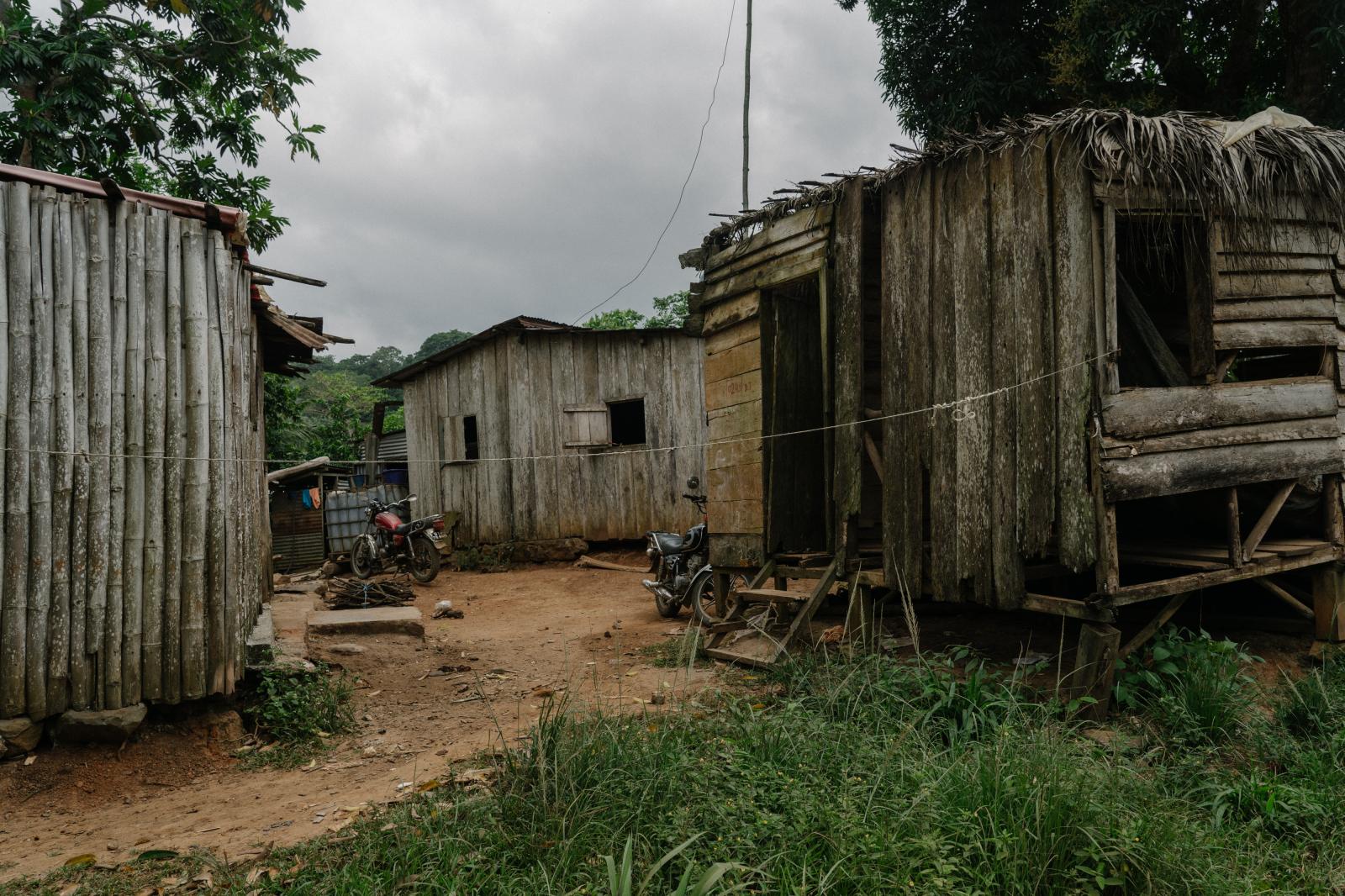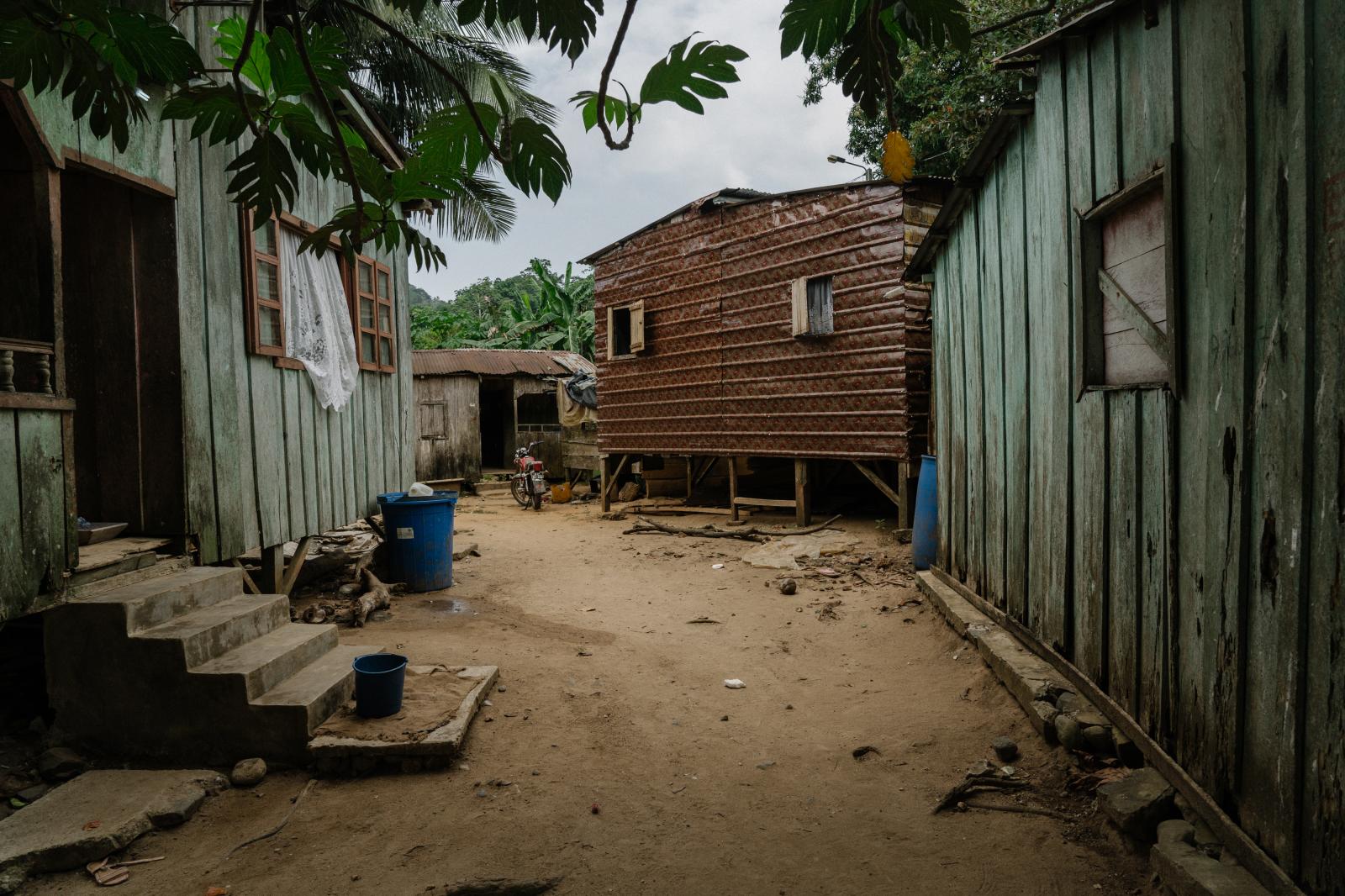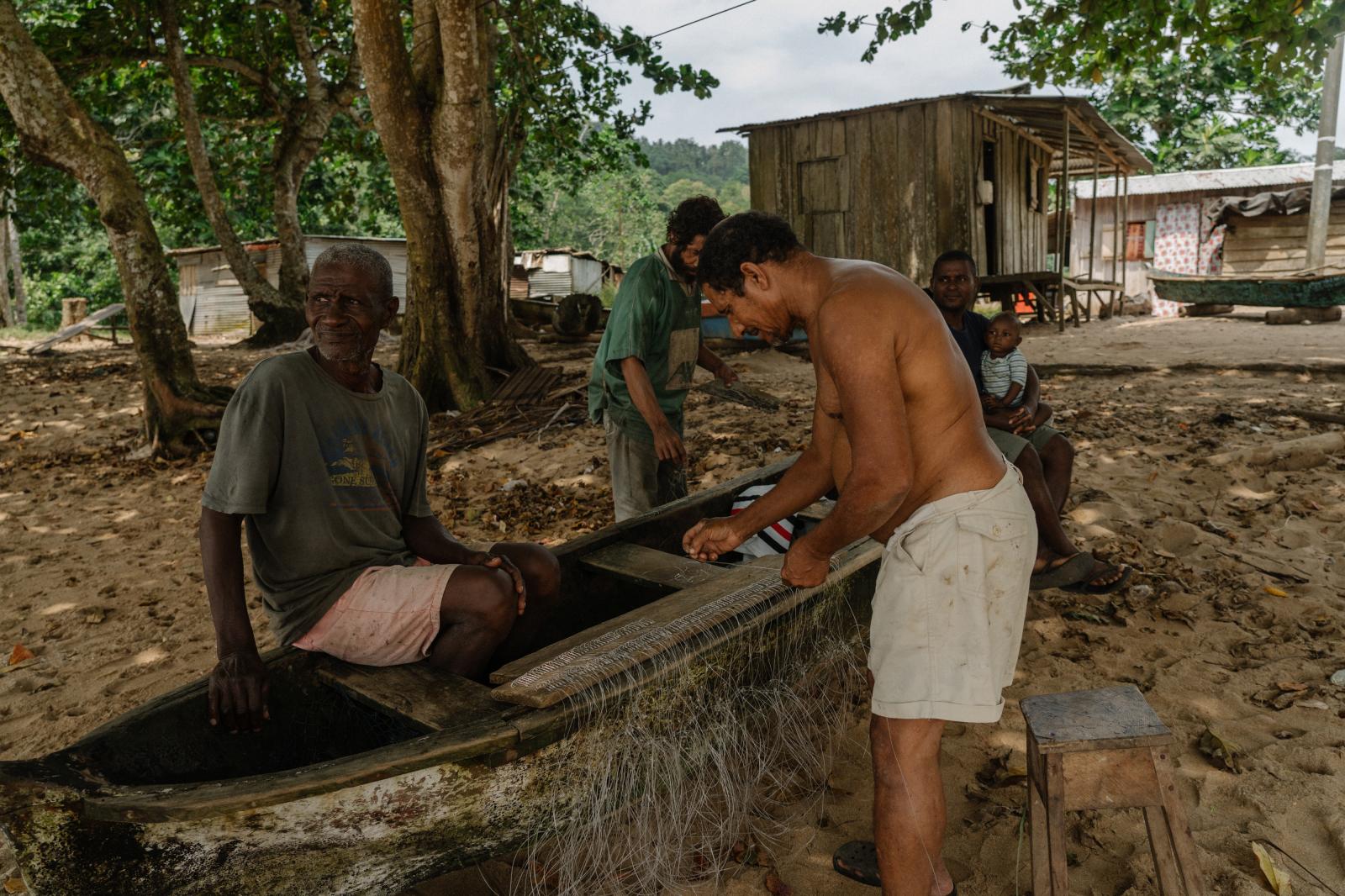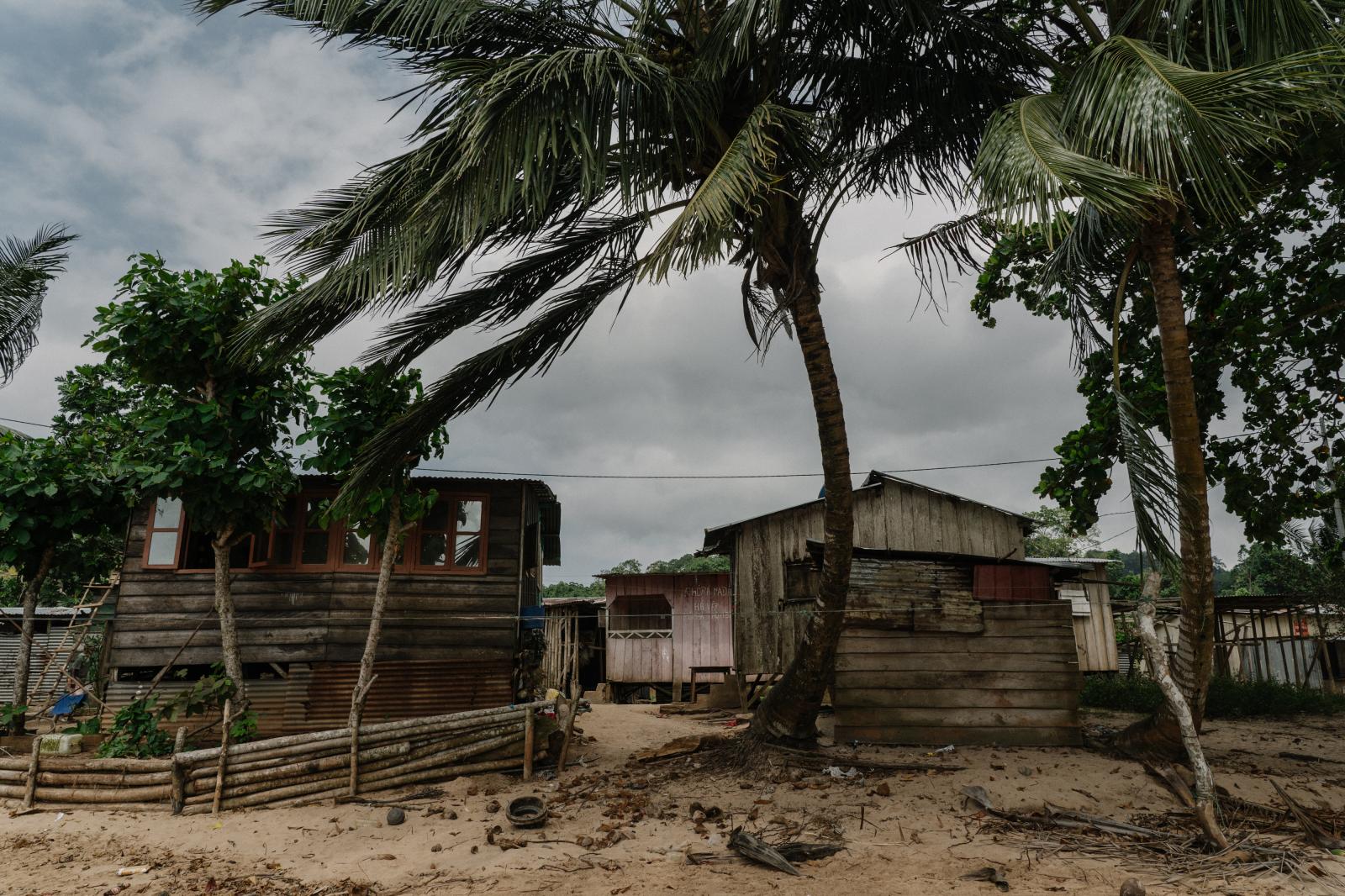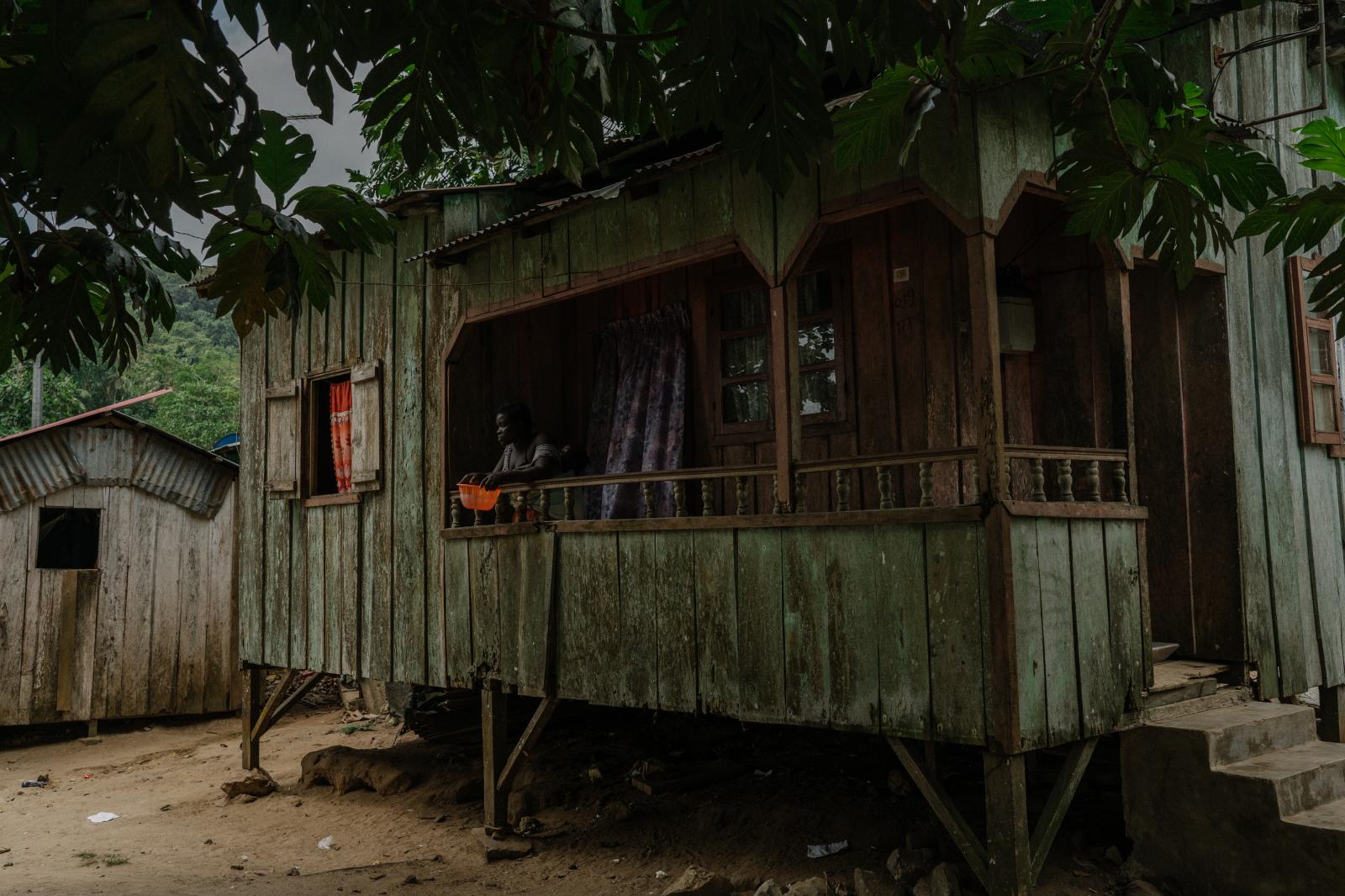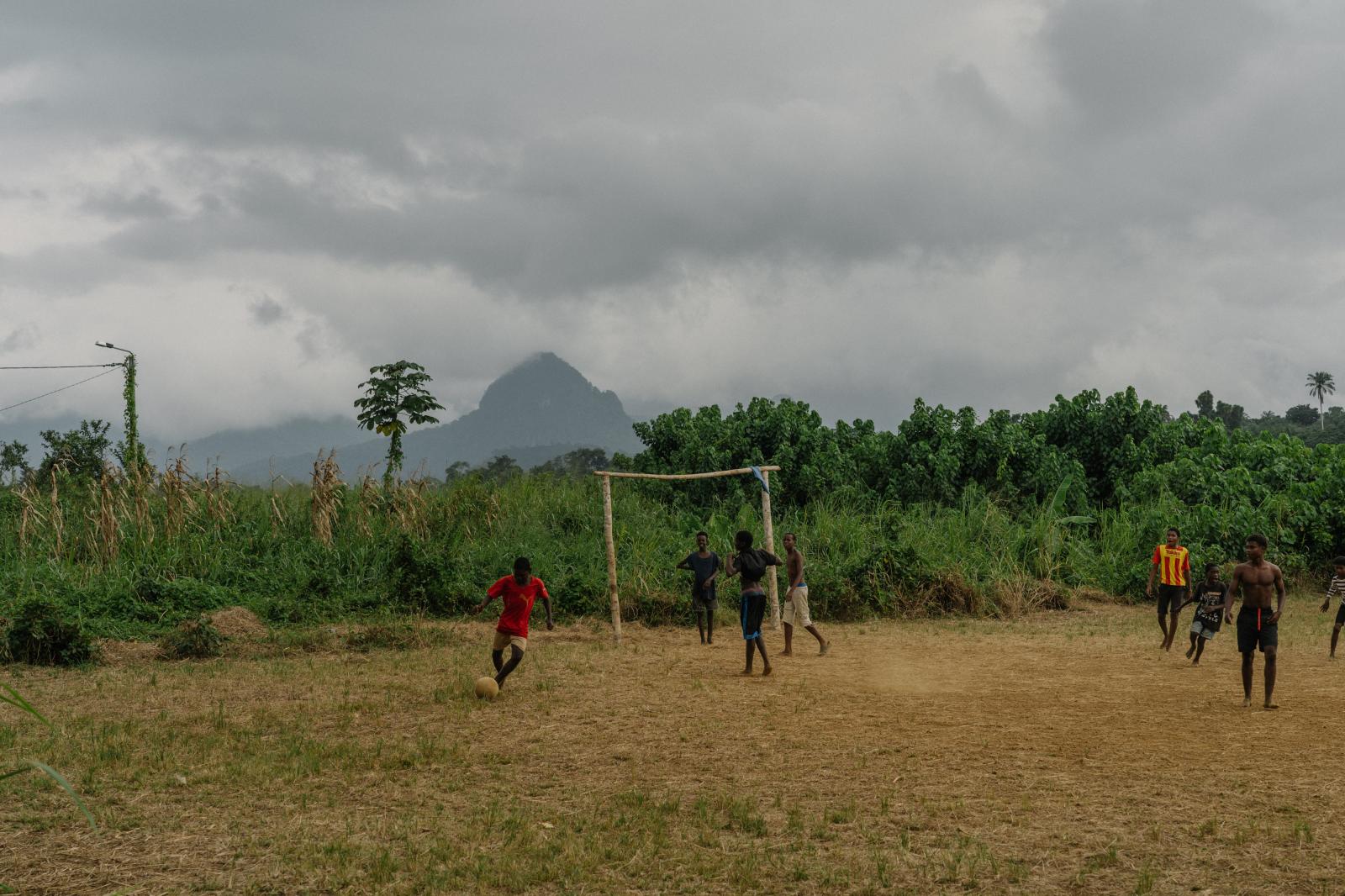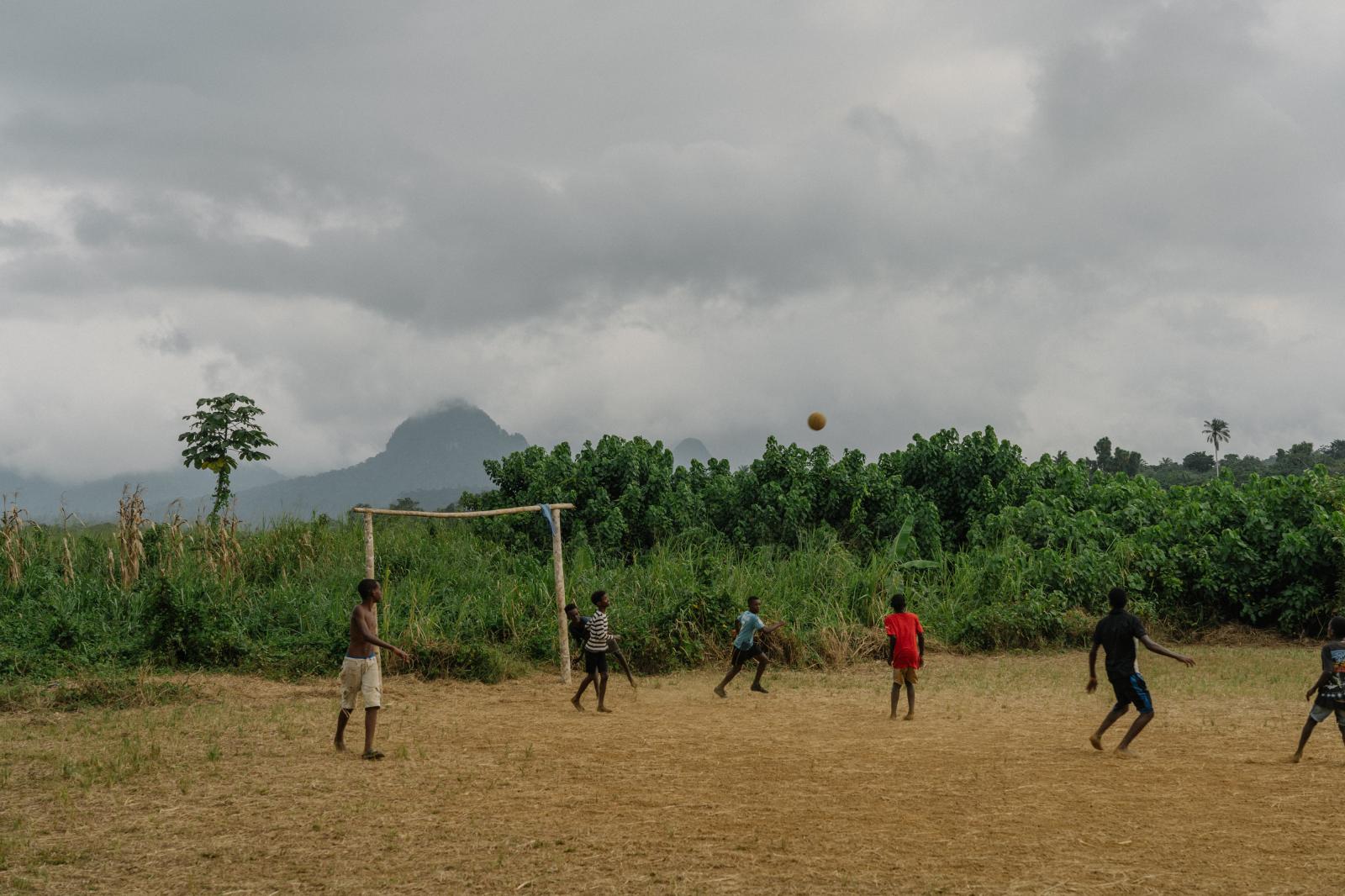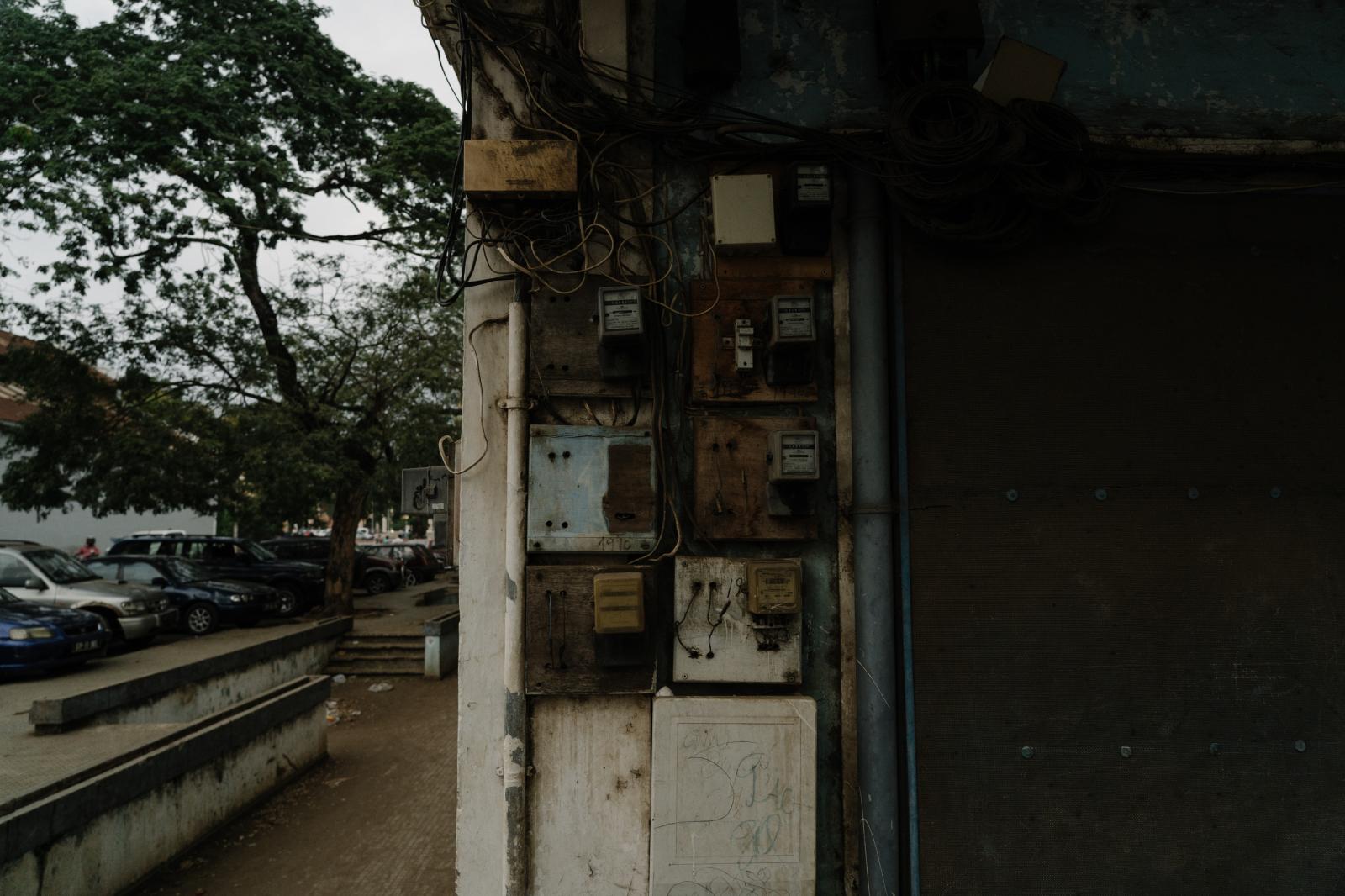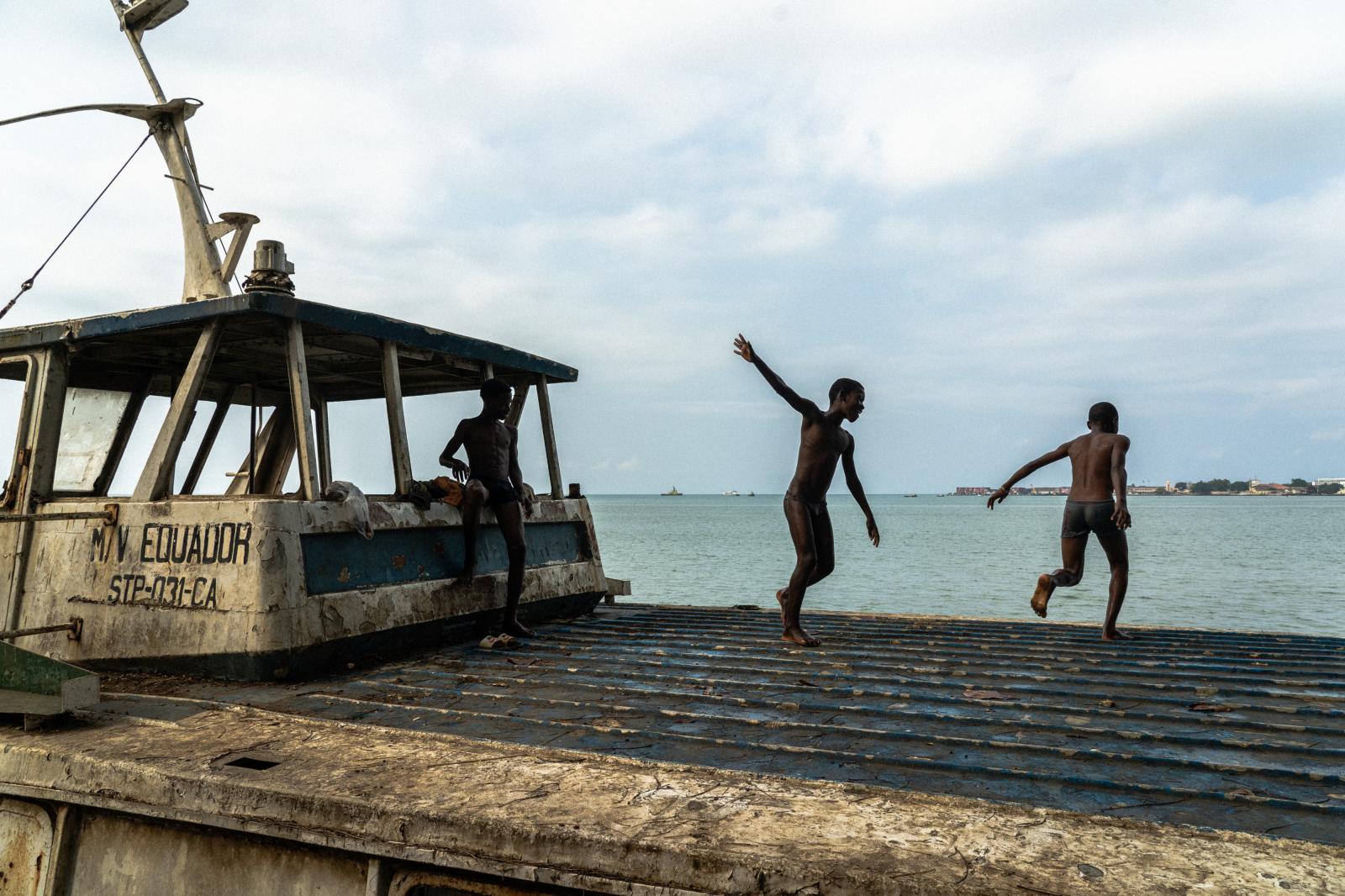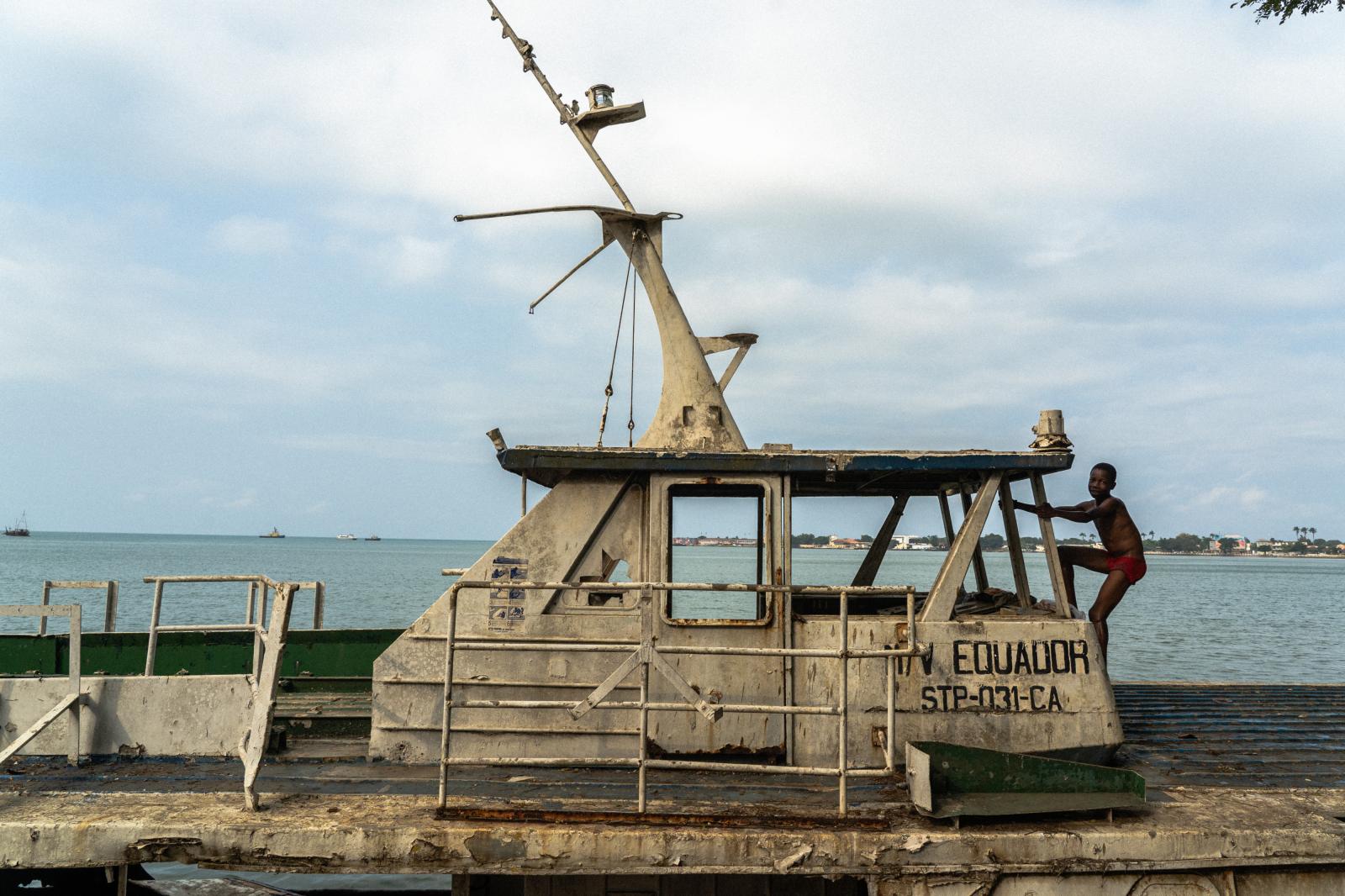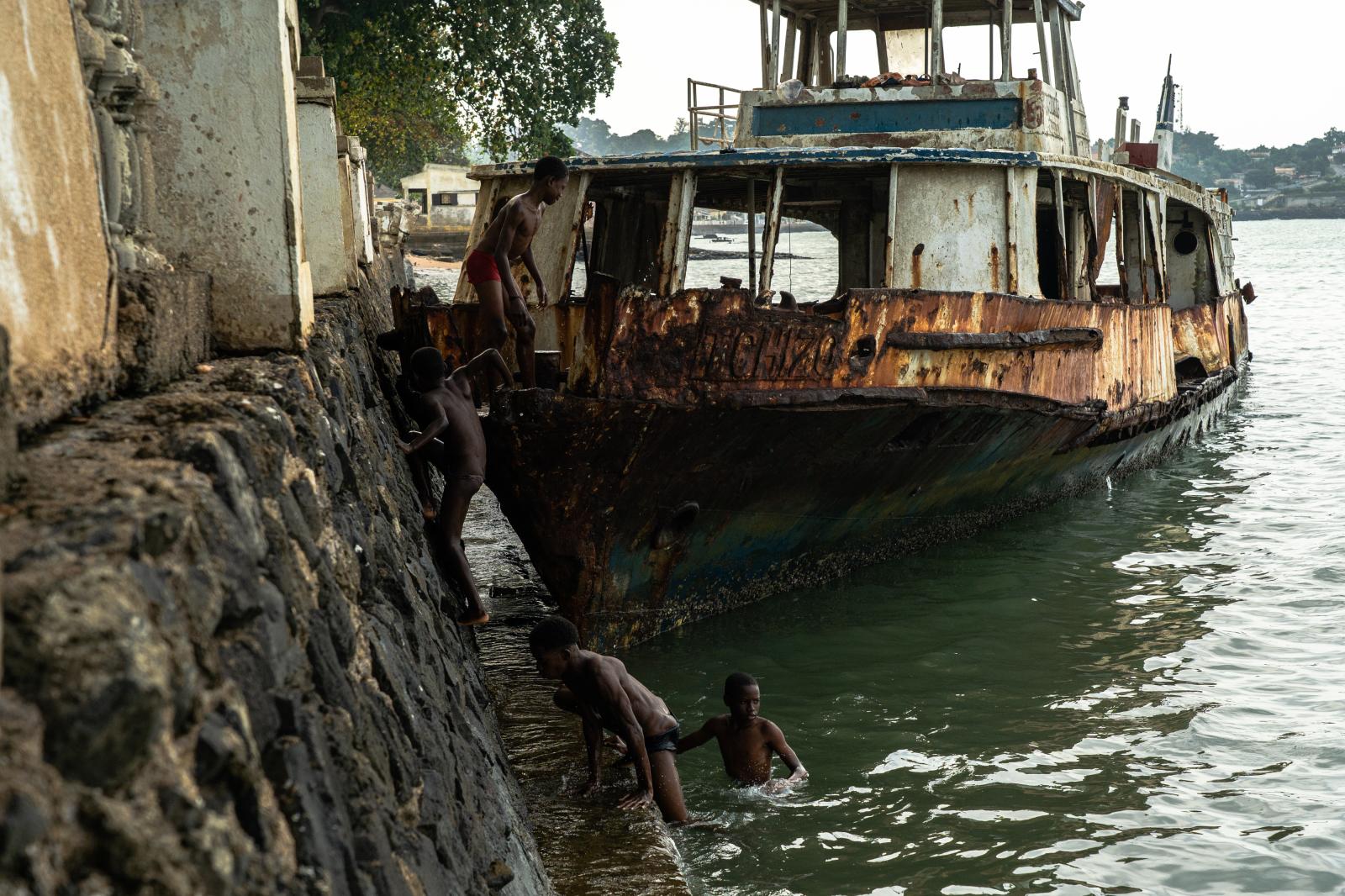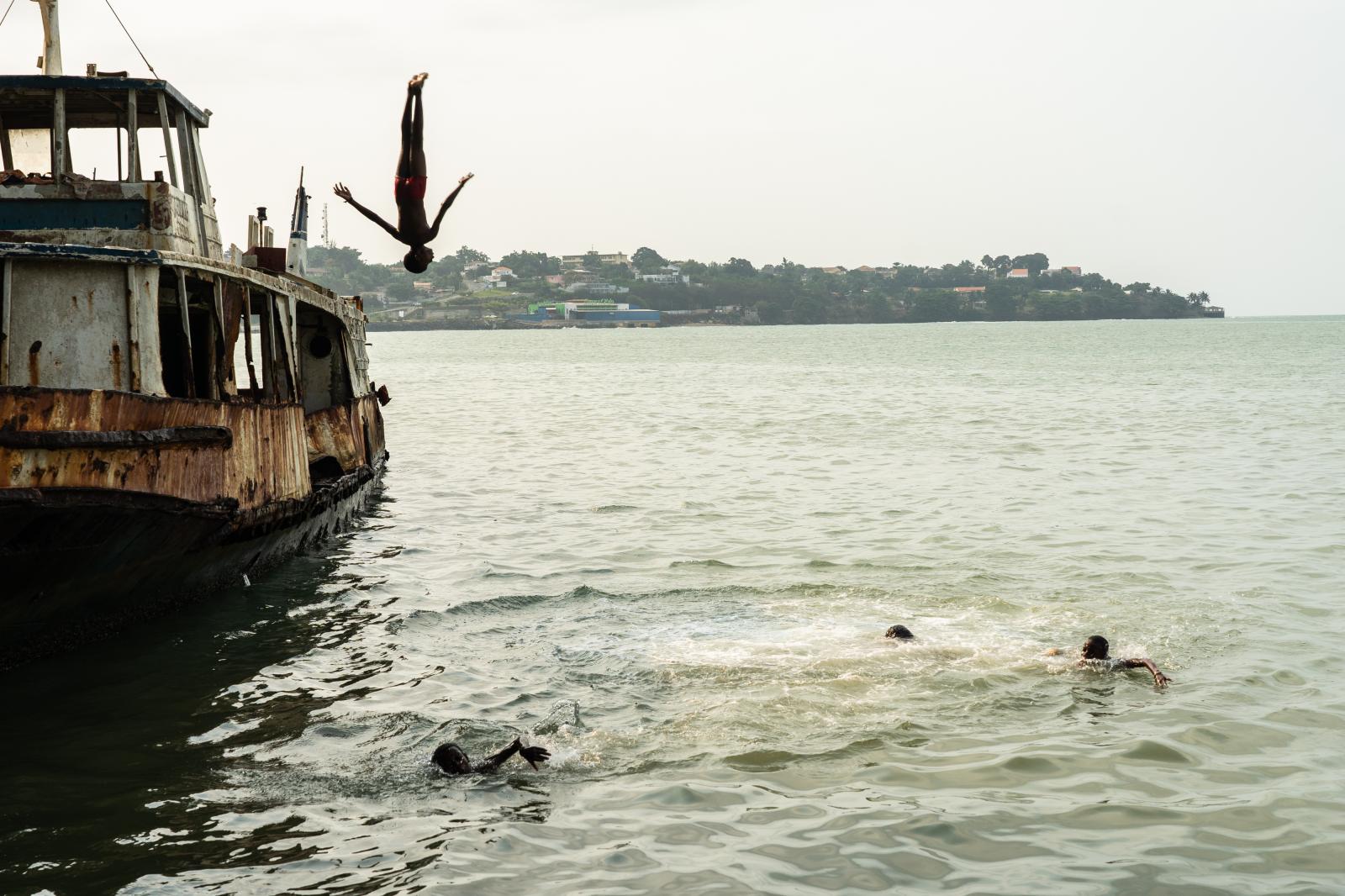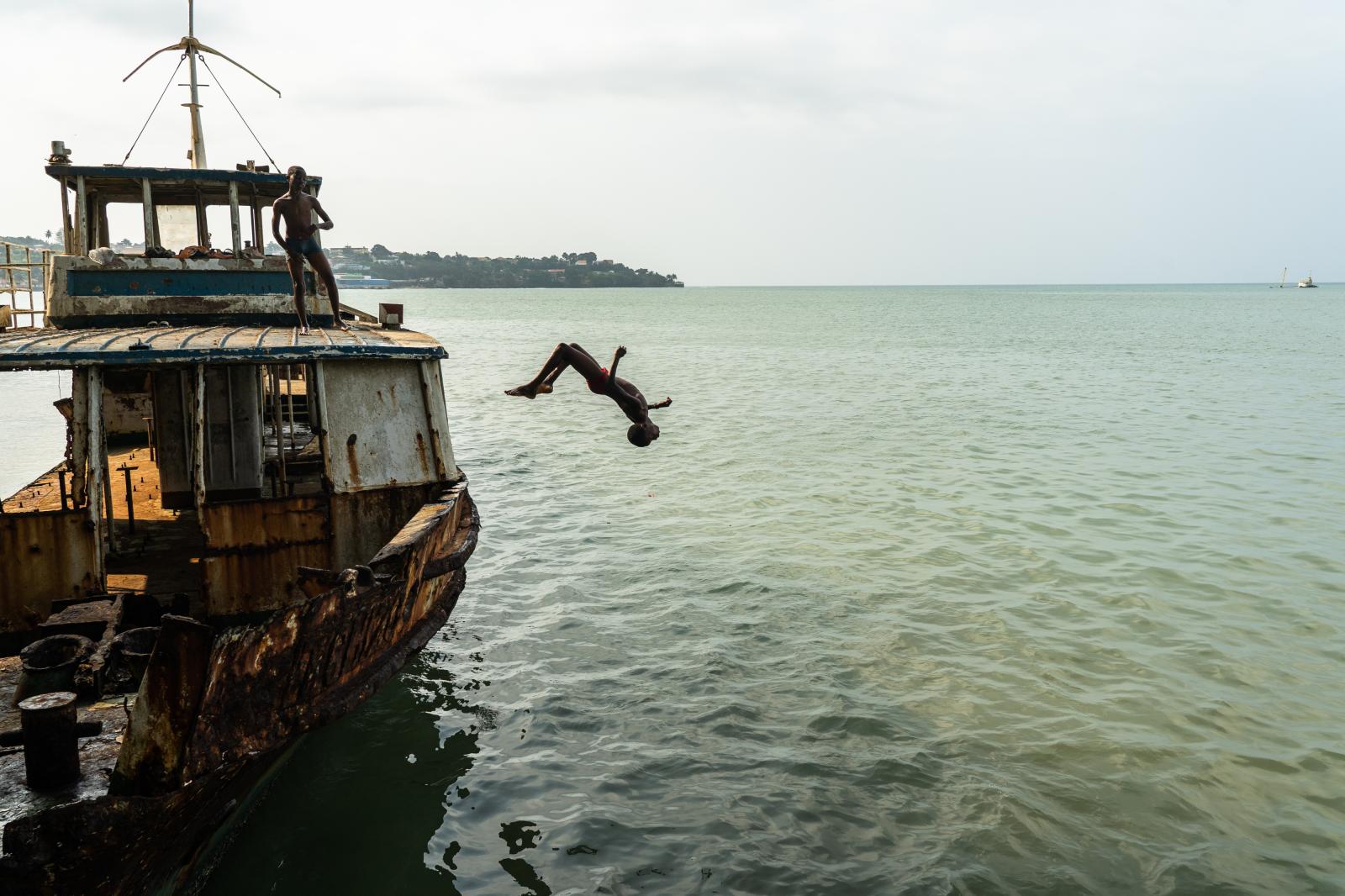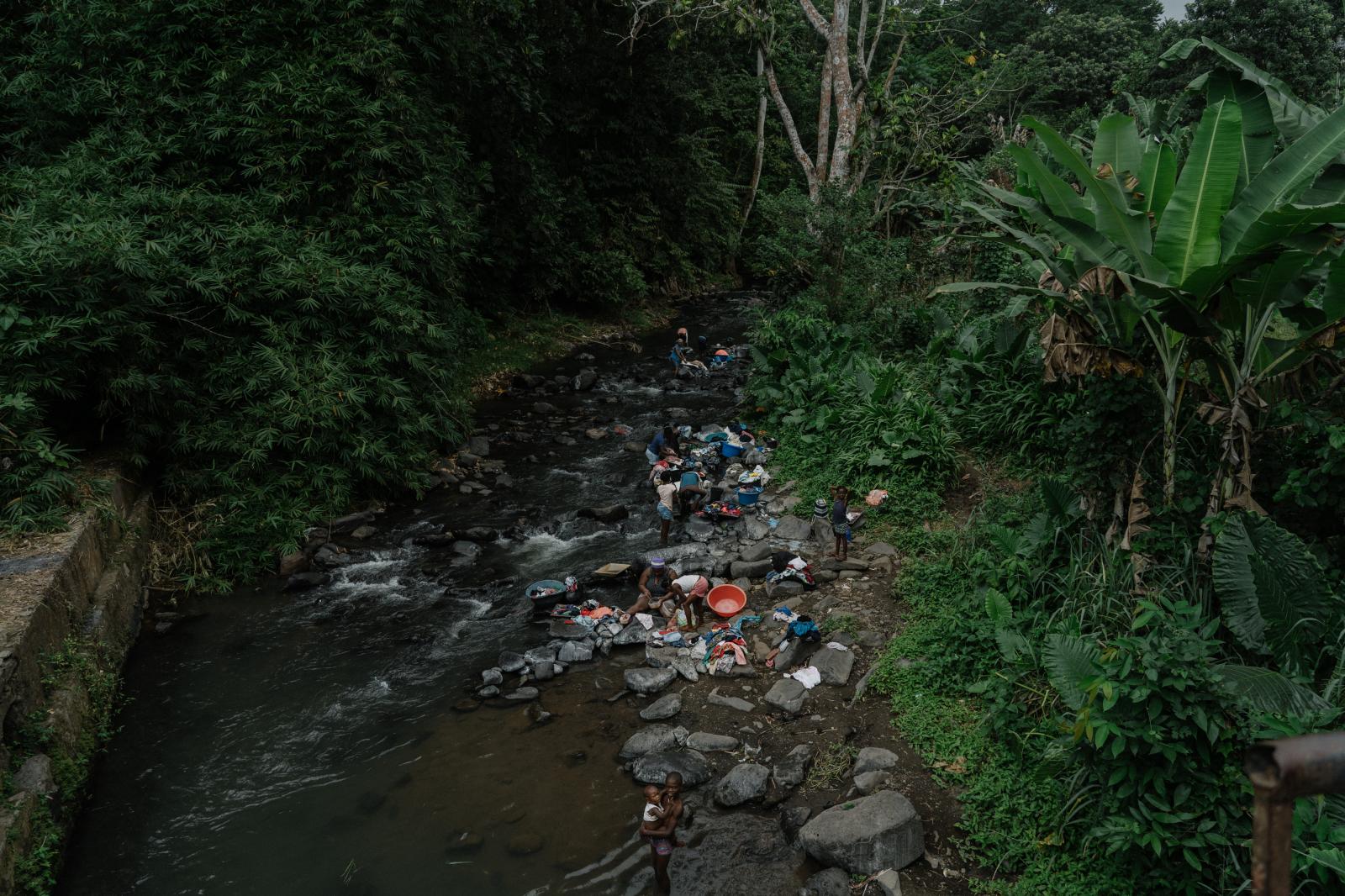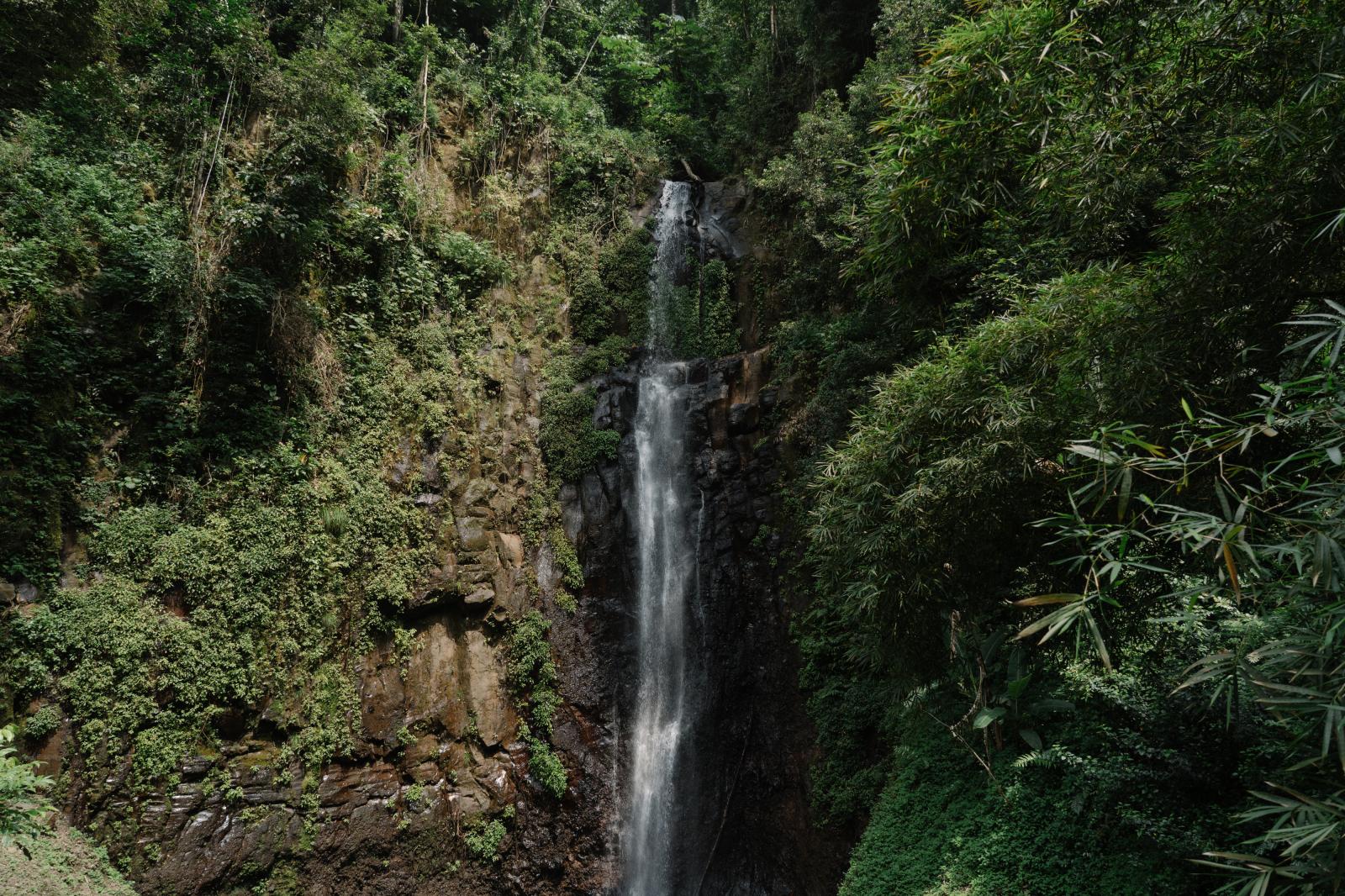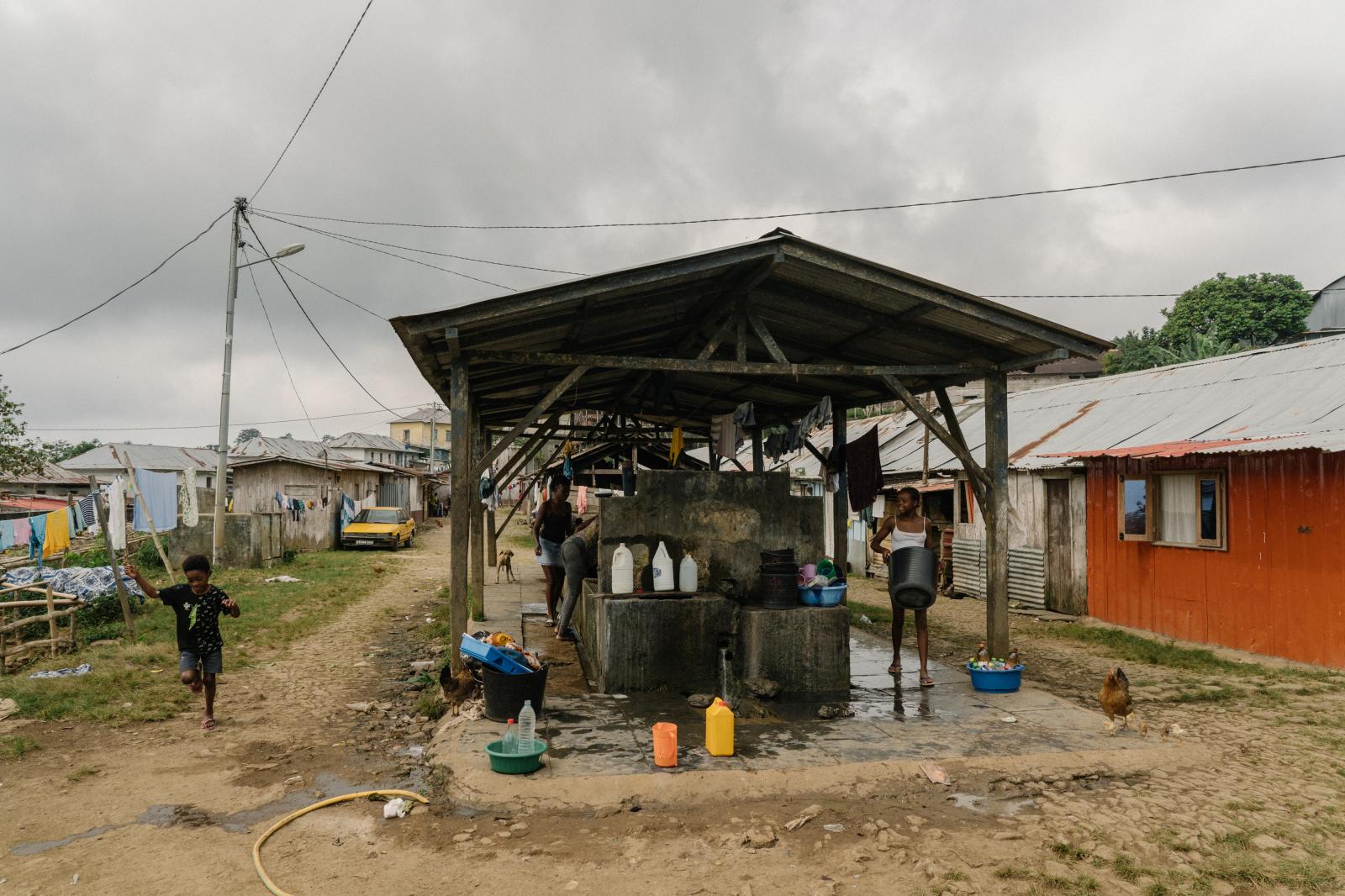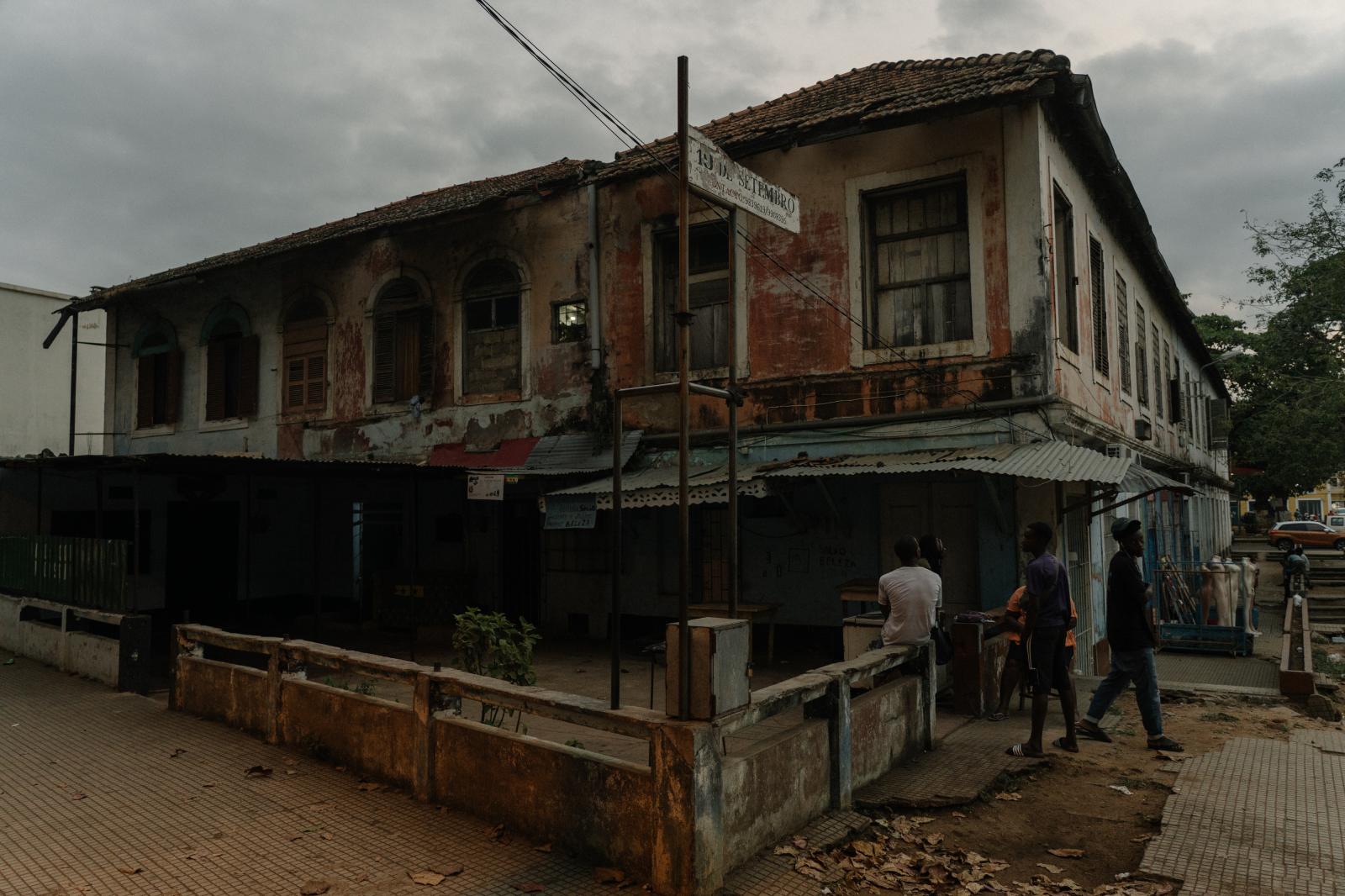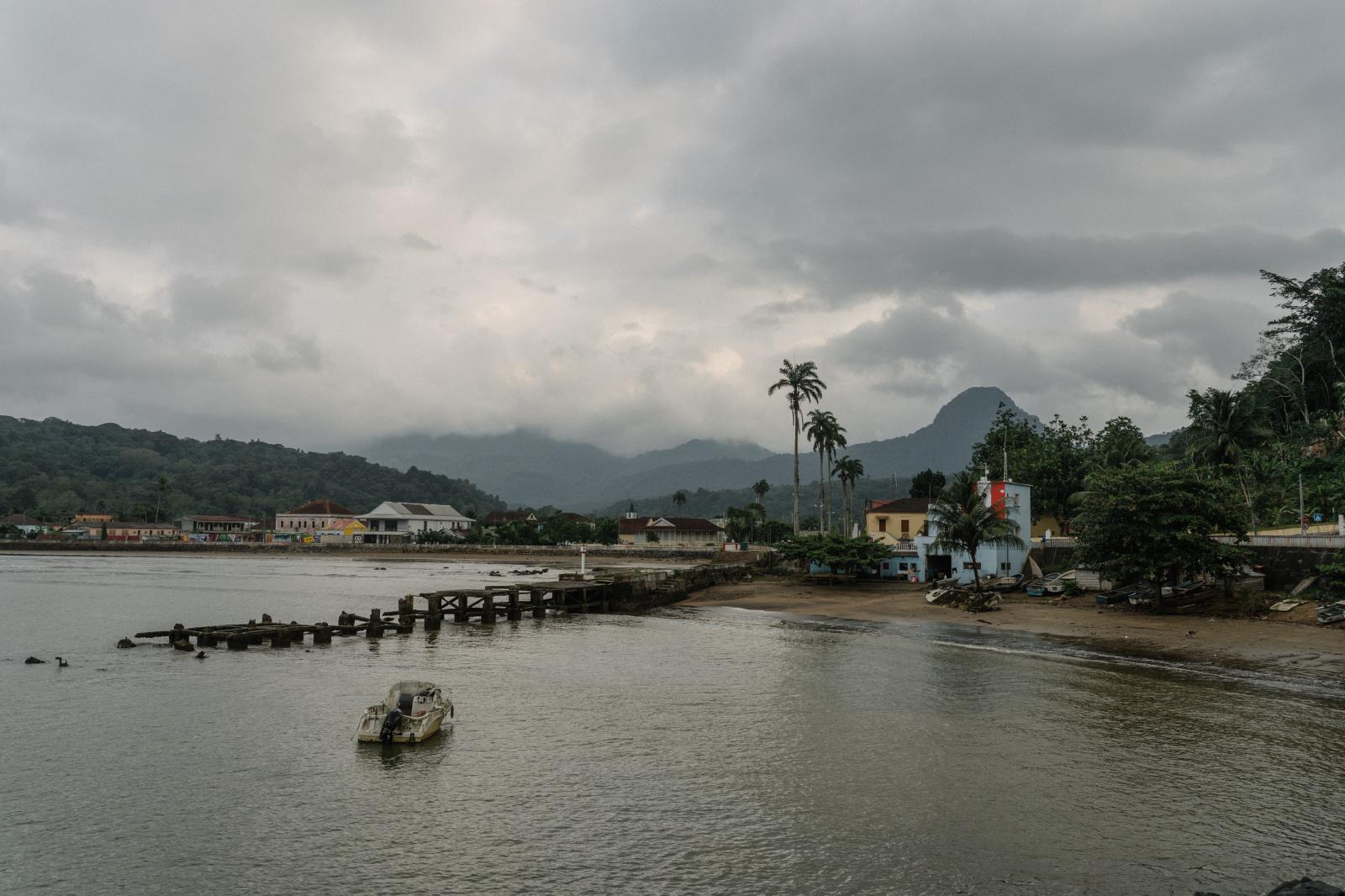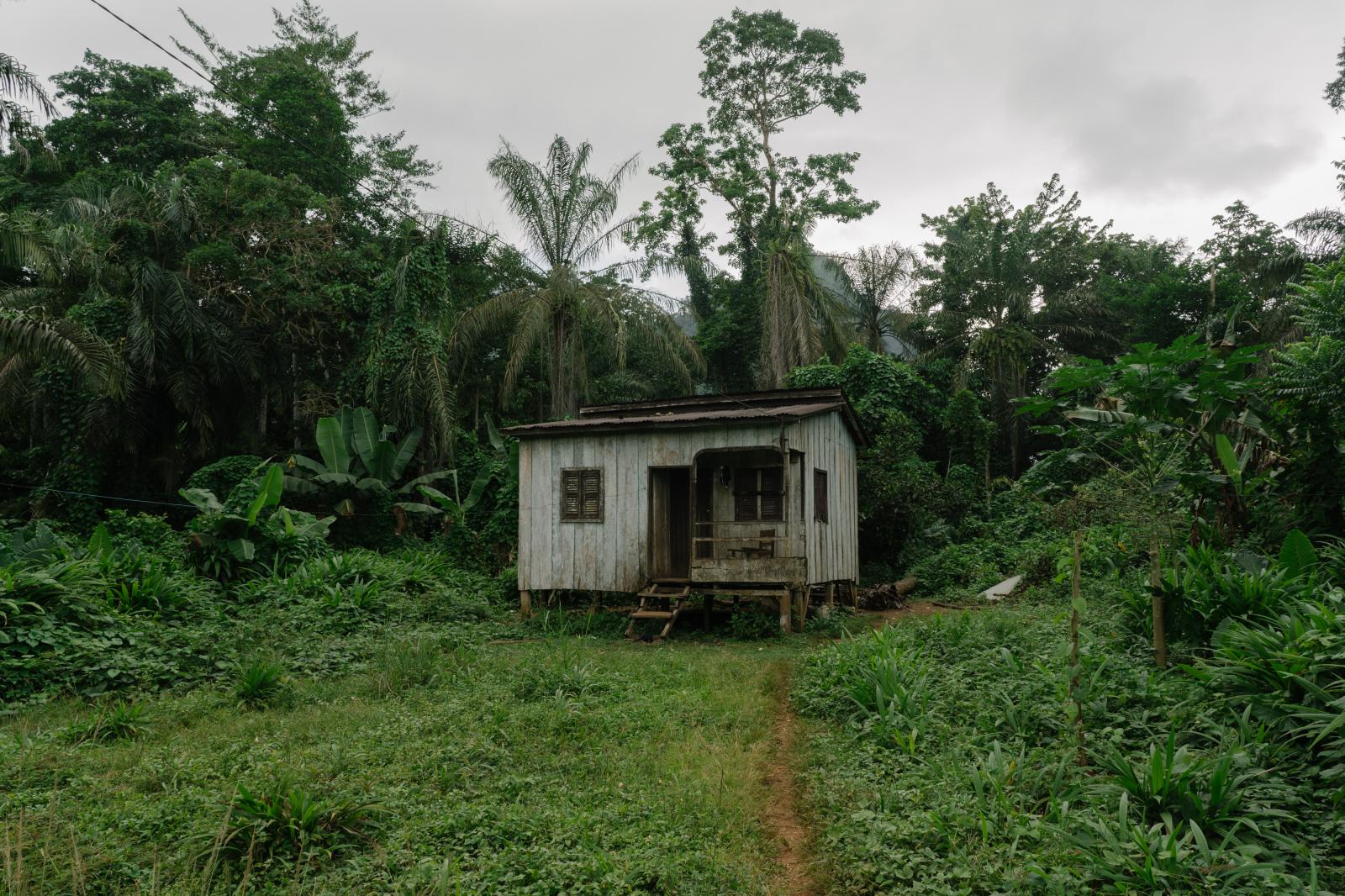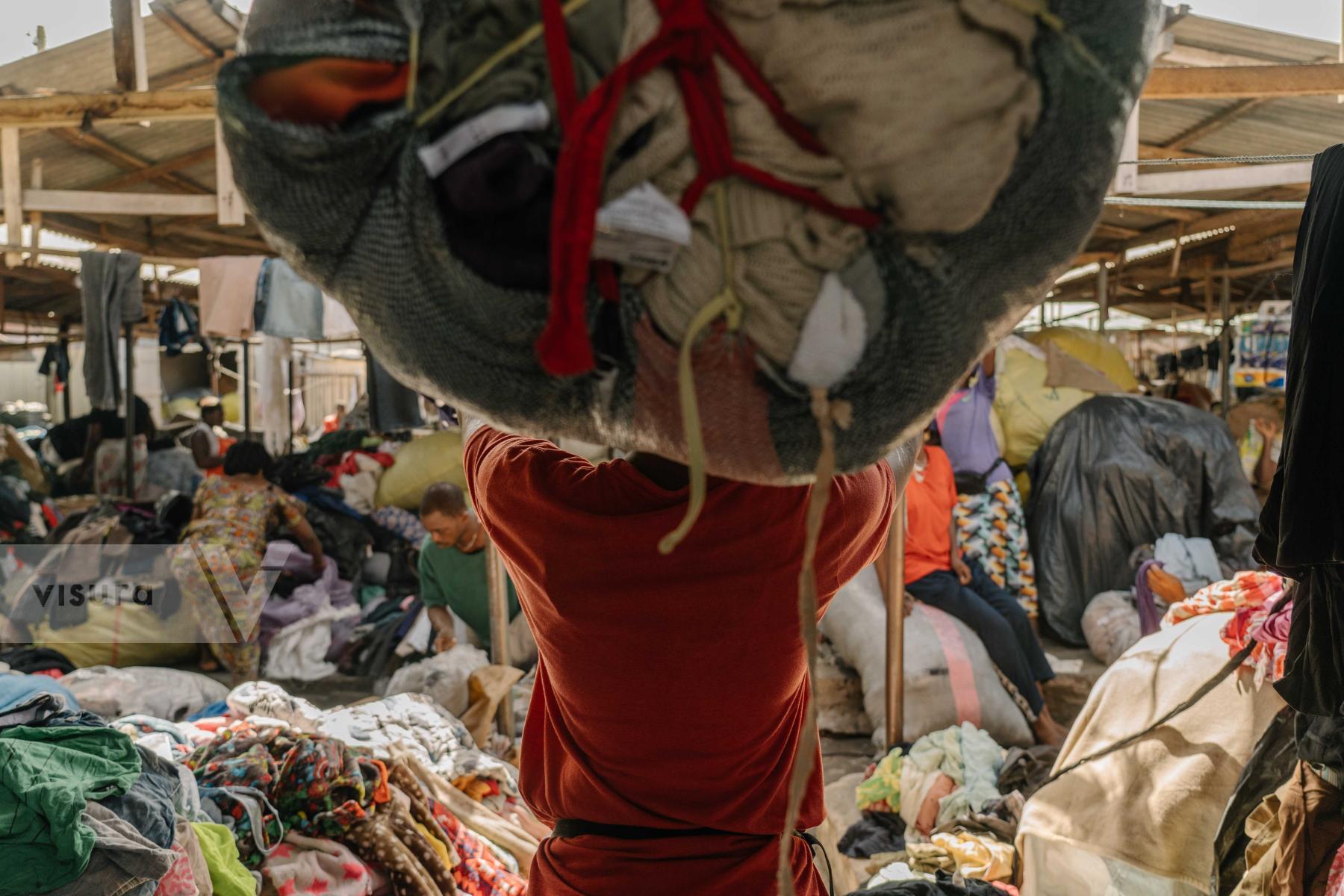
A kayayei is carrying a heavy load through the busy streets of Kantamanto, Accra's largest second-hand market earning only a few cedis (a few dollars) a day. Kayayei are usually young women from the north of Ghana who migrate in search of better employment opportunities, in Accra, Ghana on May 15, 2024.
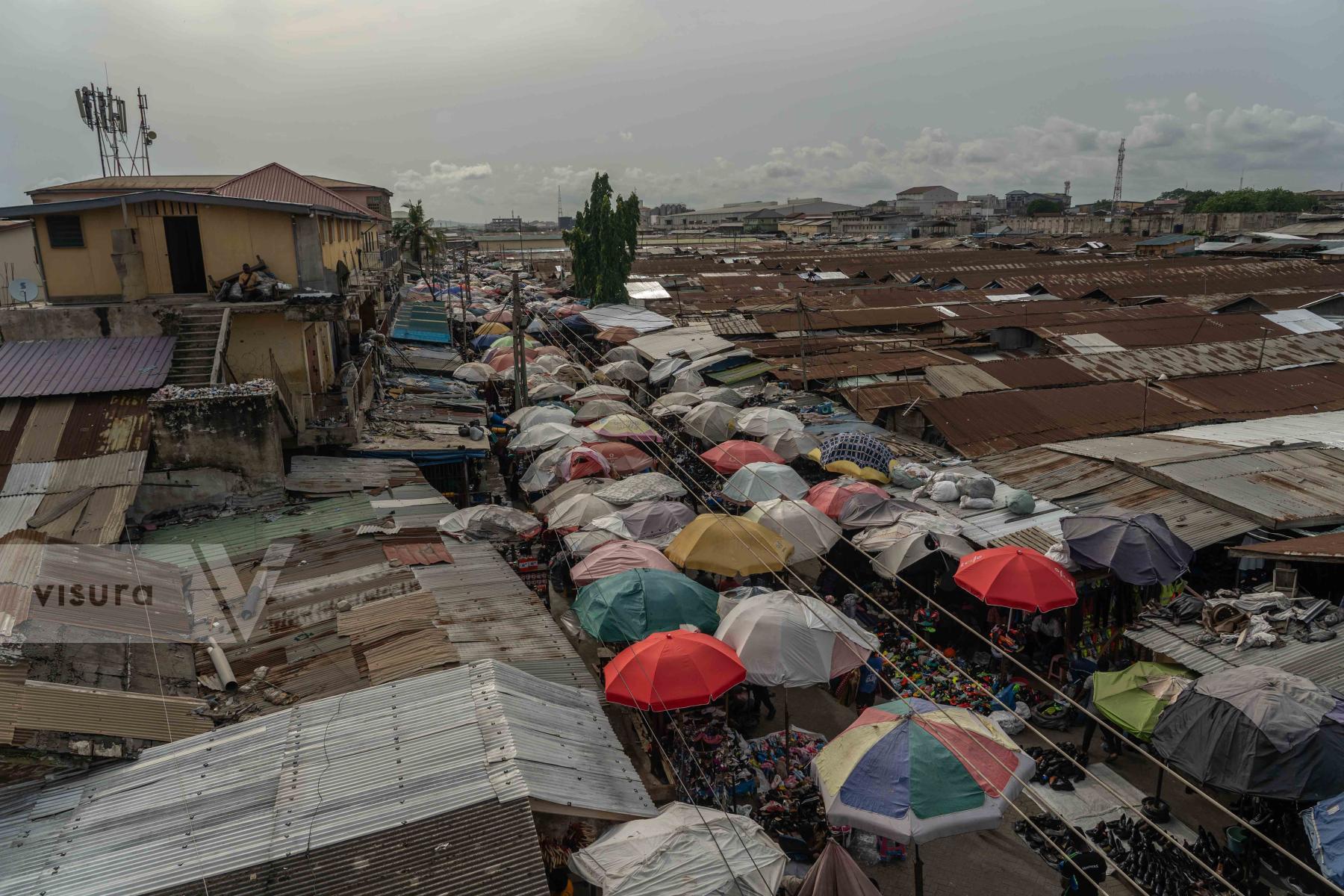
The Kantamanto Market, situated in the central business district of Accra, is Ghana’s largest second-hand clothes market with around 30,000 traders. Every week, Kantamanto Market in Accra receives approximately 15 million pieces of second-hand clothing from the Global North in Accra, Ghana on May 10, 2024.
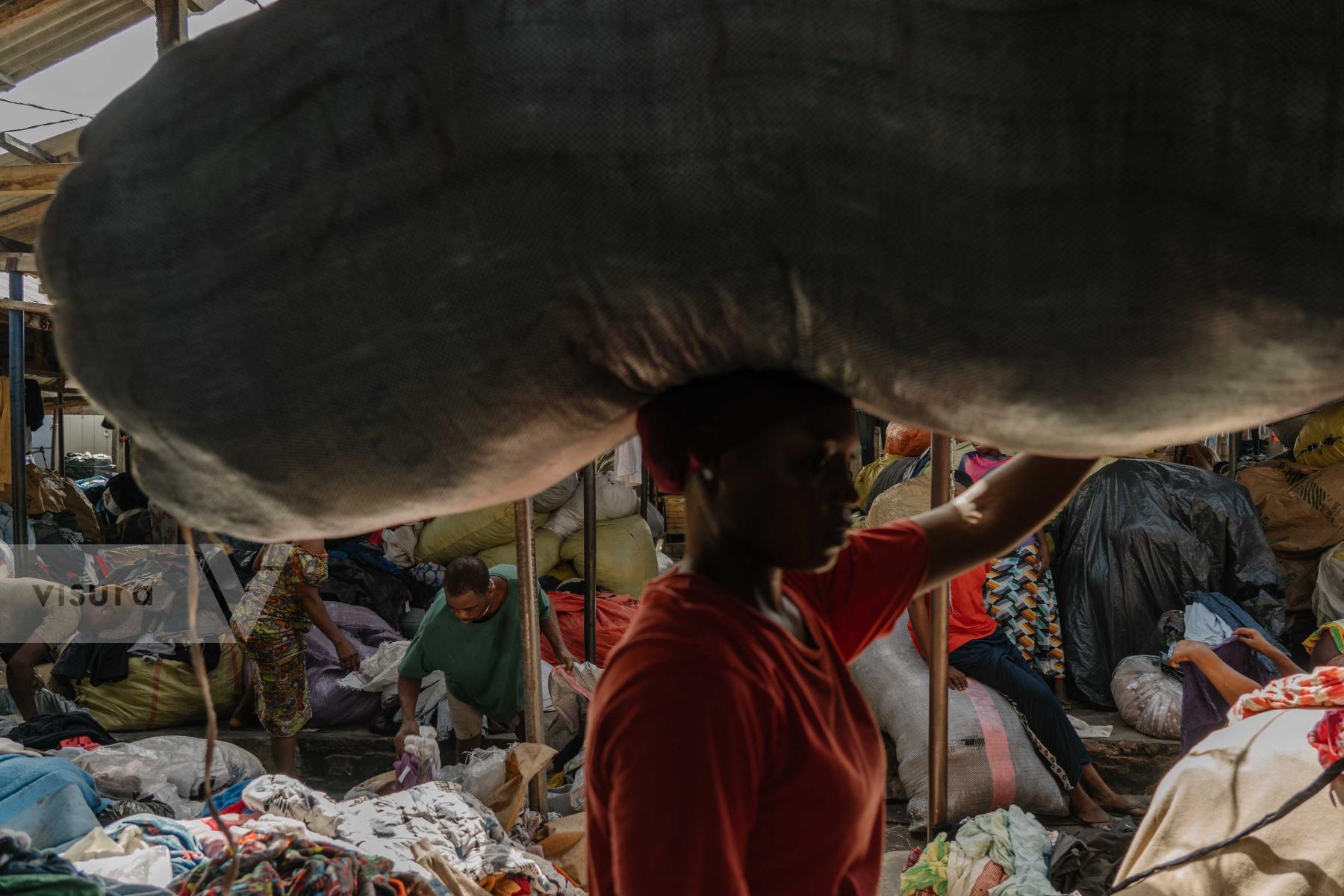
Some kayayei carry bales as heavy as 55 kg, leading to severe injuries to their spines and necks. Often, they rely on over-the-counter painkillers to continue working despite the pain.
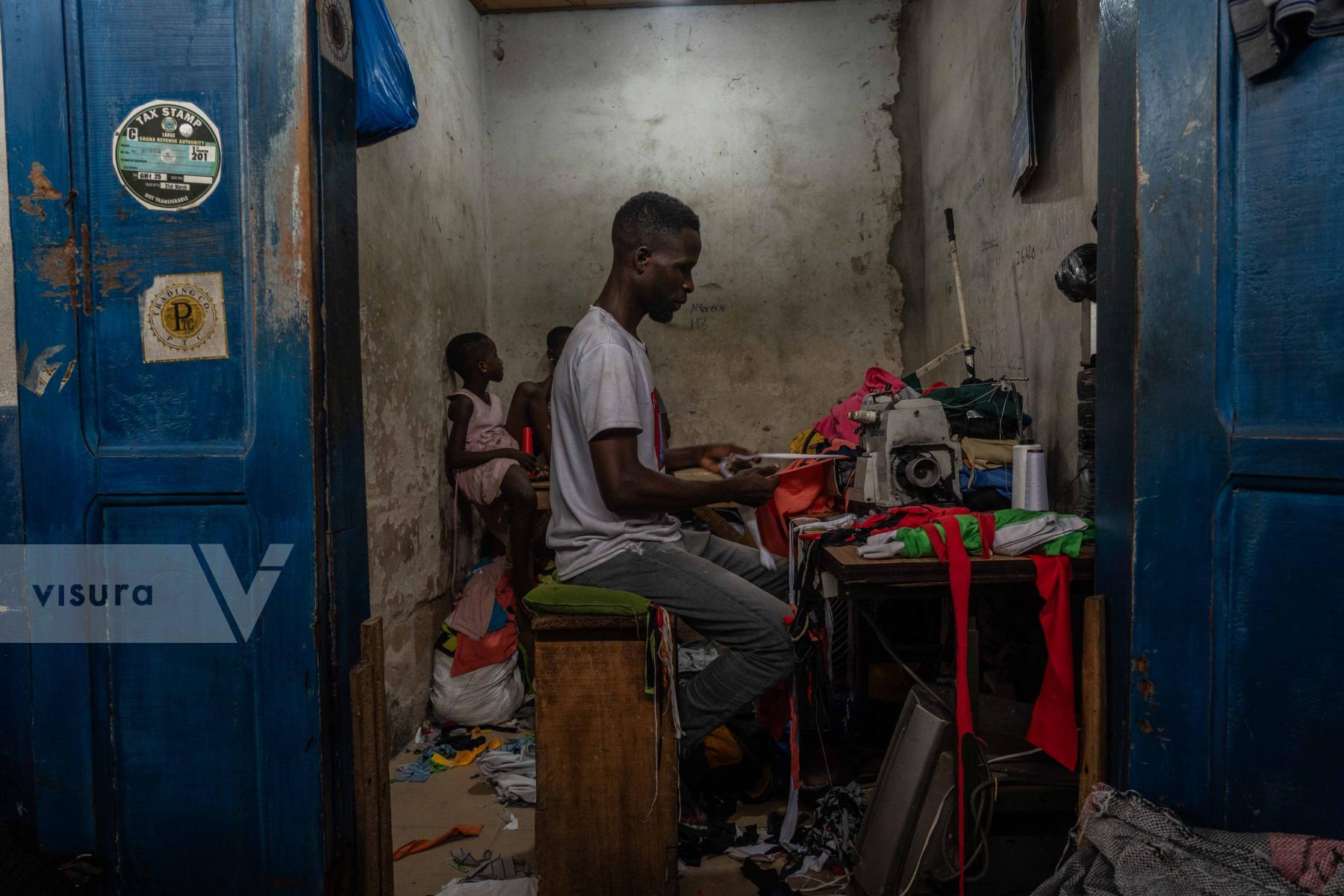
Edem has been working as a tailor for over 20 years at Kantamanto second-hand clothes market in Accra. He sews 150 T-shirts daily in Accra, Ghana on May 15, 2024.
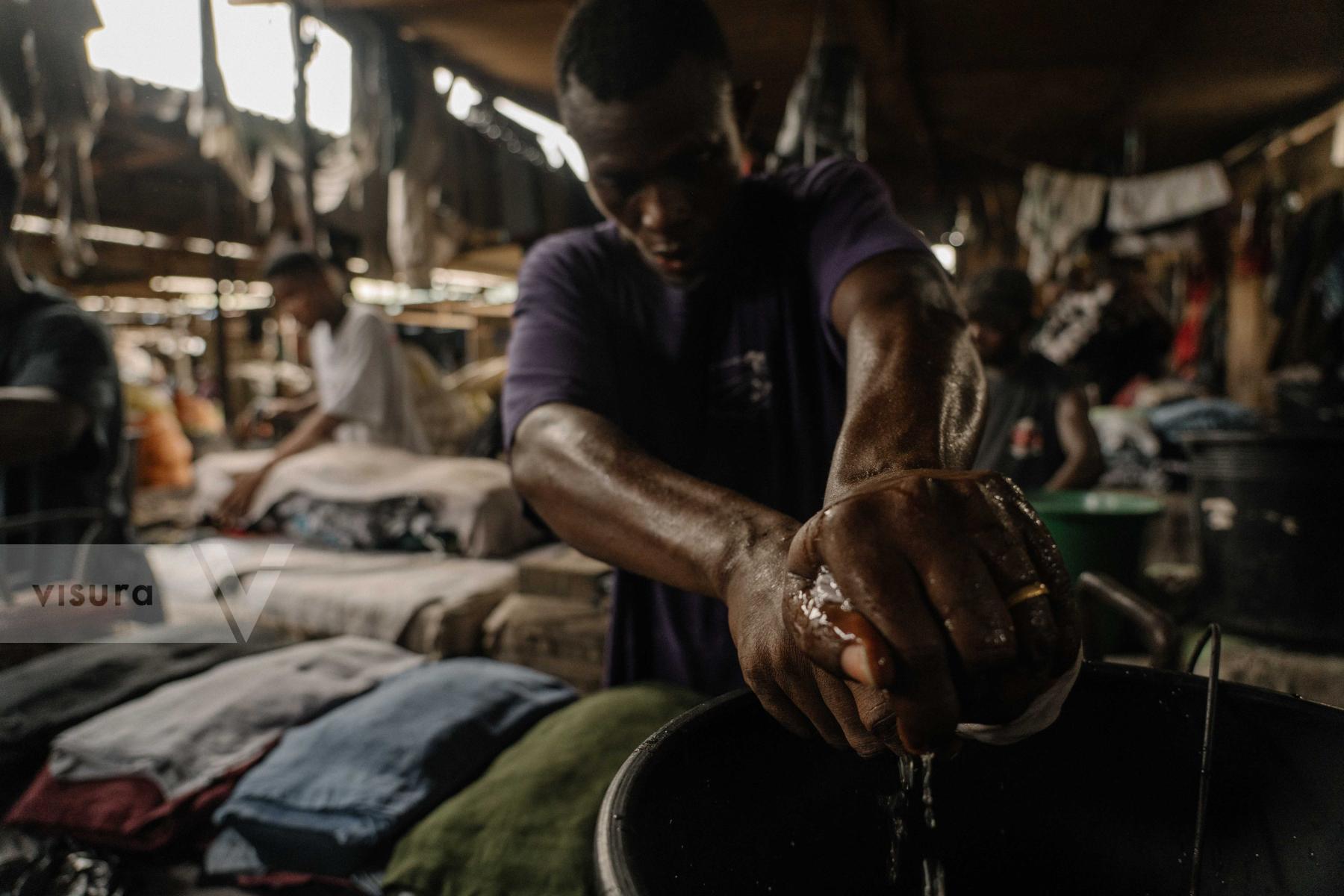
Ironing section at Kantamanto second-hand clothes market in Accra, Ghana on May 10, 2024.
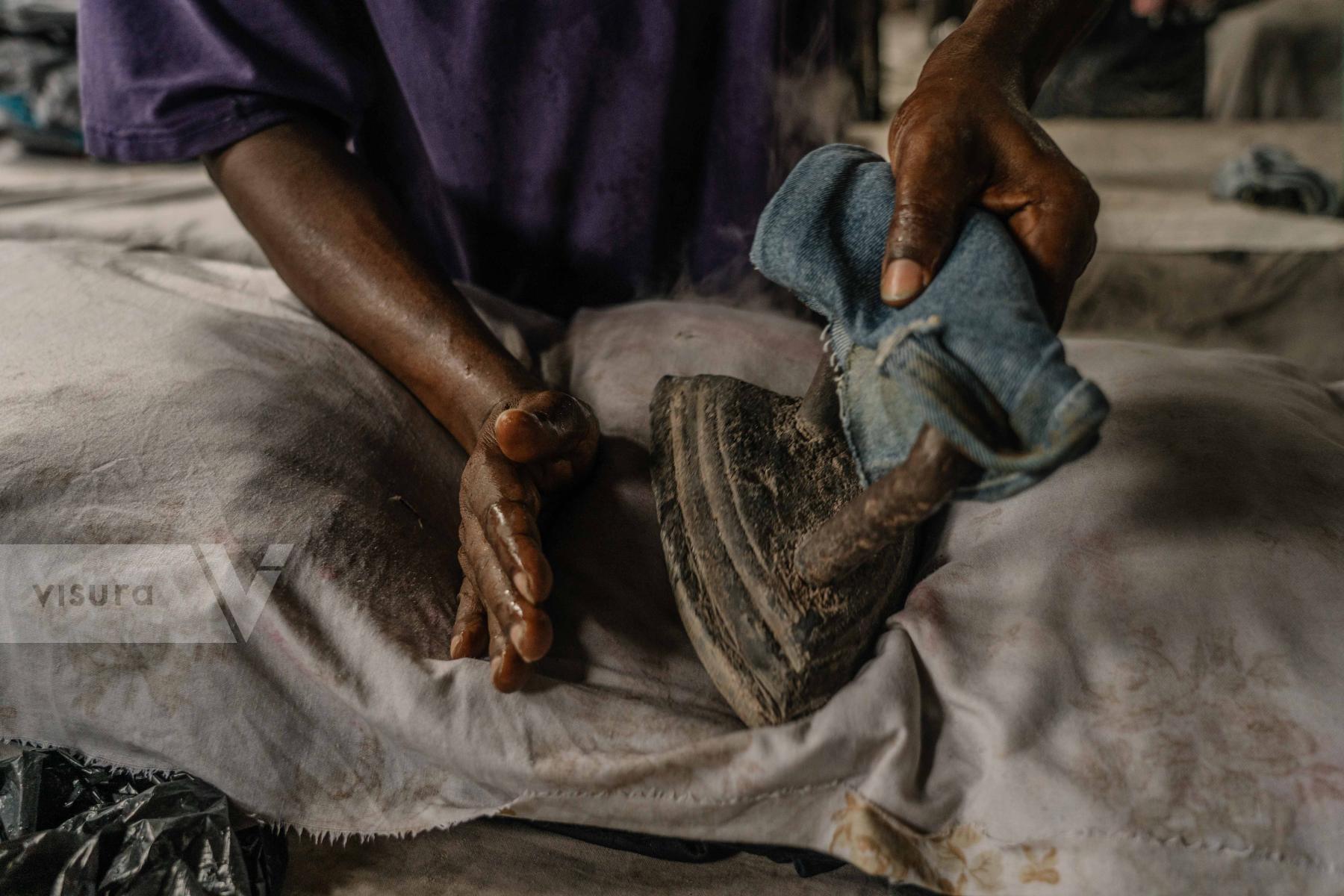
Isaac has been ironing clothes for over 30 years at Kantamanto second-hand clothes market in Accra. He uses an old cast iron that has been heated on hot coals in Accra, Ghana on May 10, 2024.
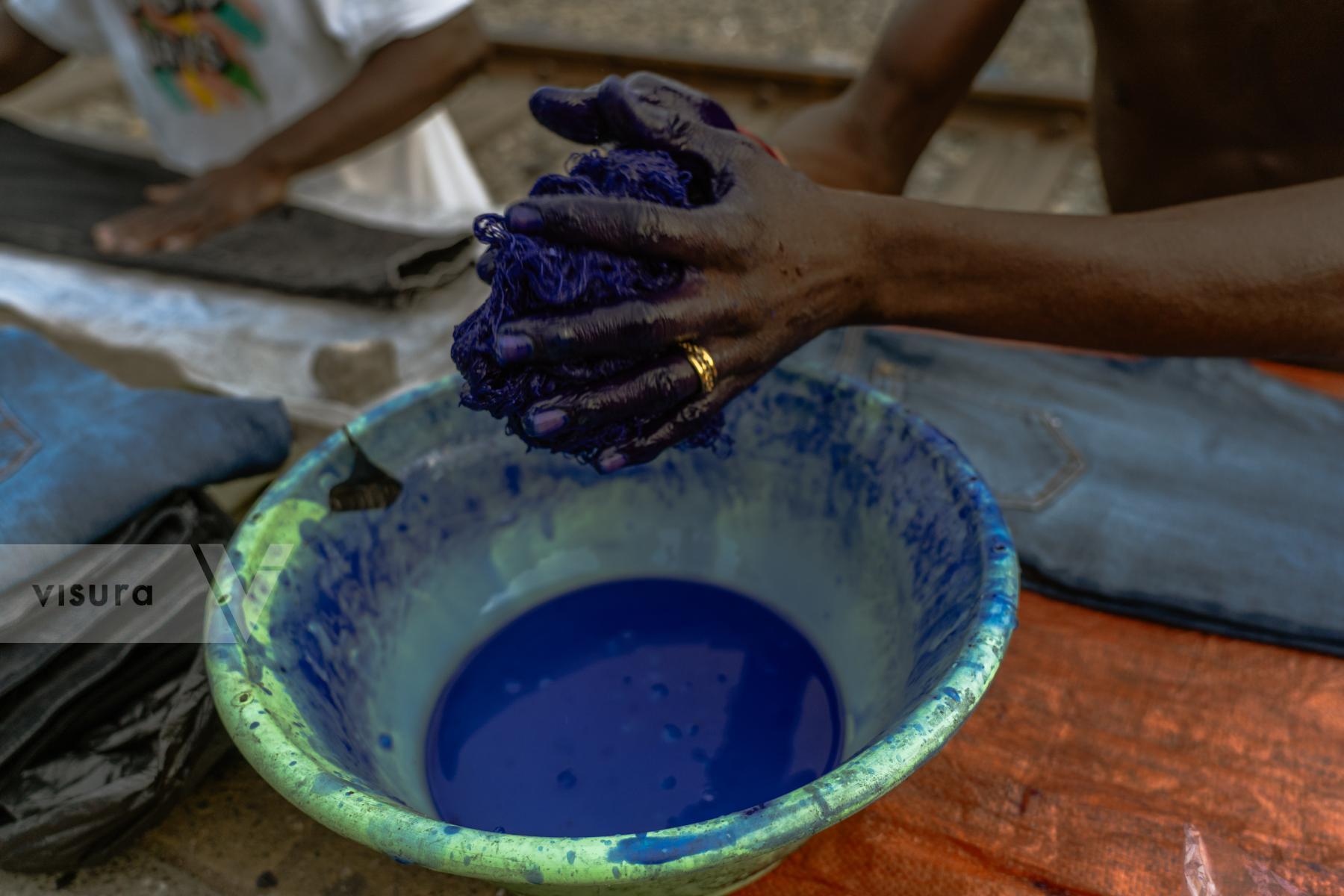
Workers at Kantamano second-hand market, use blue dye mixed with corn starch to dye worn-out jeans , preparing them for resale in Accra, Ghana on May 10, 2024.
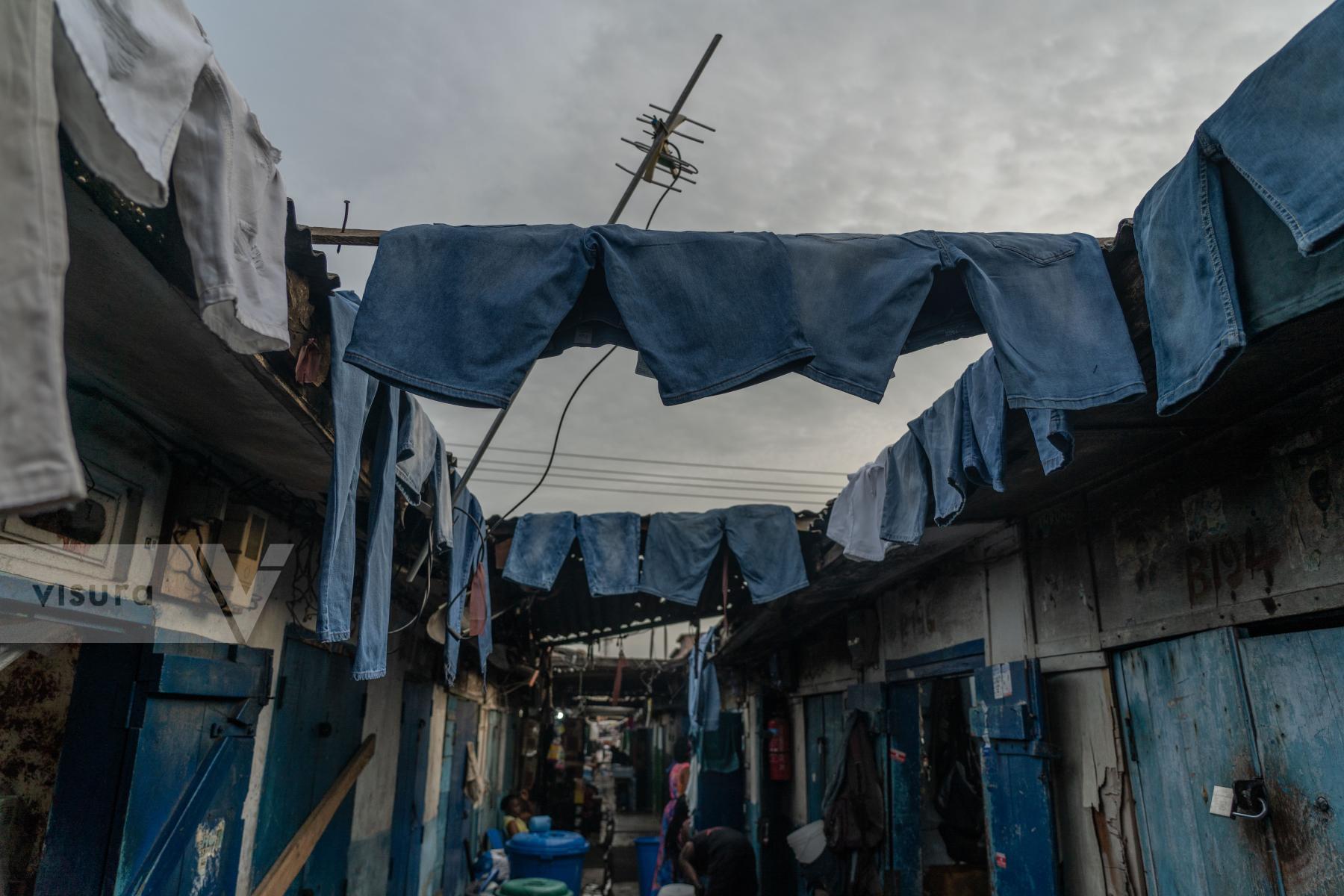
Freshly dyed jeans are laid out to dry on the roof at Kantamanto, Accra's largest second-hand market in Accra, Ghana on May 10, 2024.
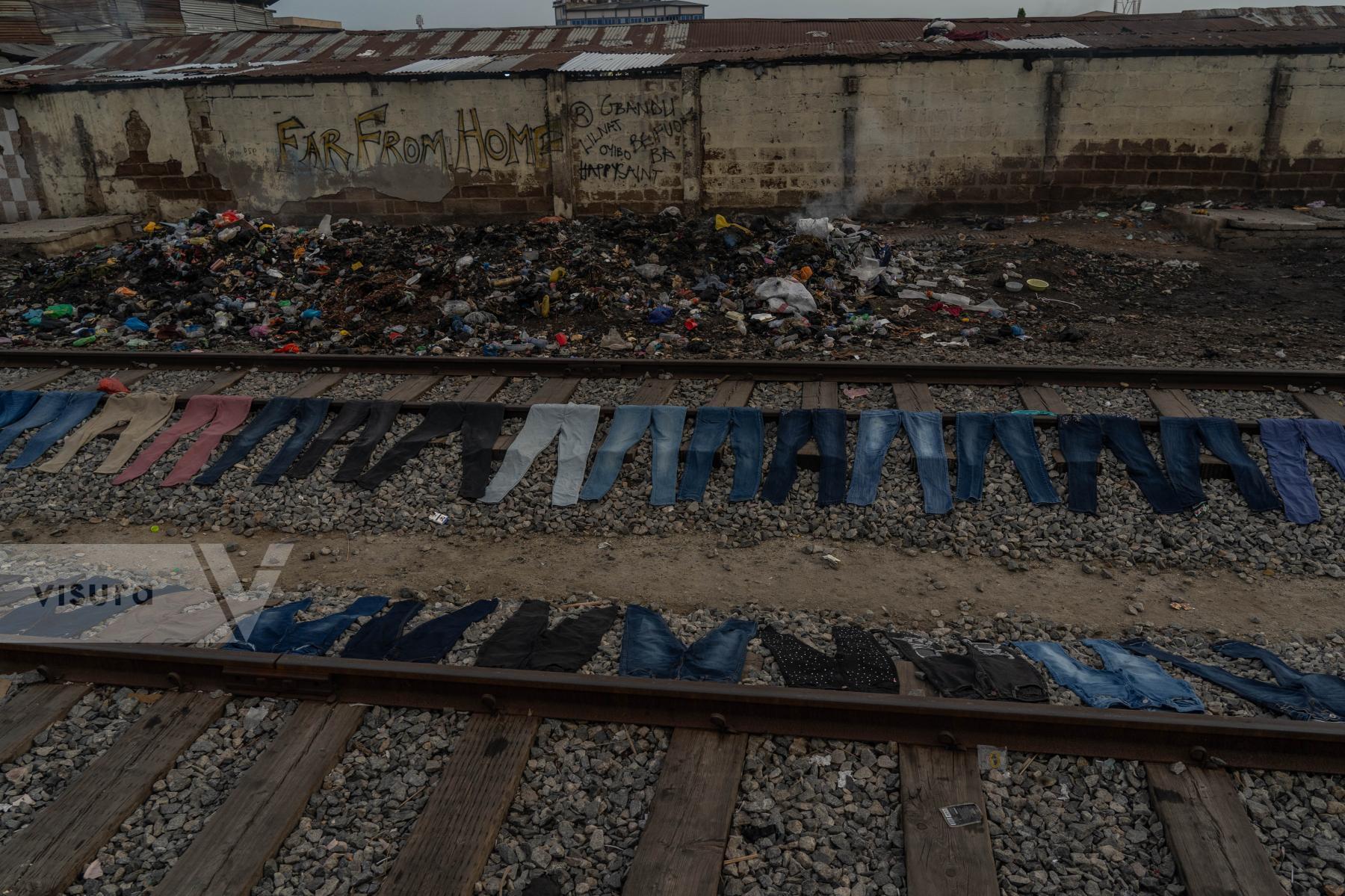
Freshly dyed used jeans are drying on the rails. Later, they will be sold at Kantamanto, the largest second-hand clothes market in West Africa in Accra, Ghana on May 10, 2024.

Amina works as a kayayei (female head porter) at Kantamanto second-hand clothes market in Accra. She migrated to the city three years ago, seeking better employment opportunities in Accra, Ghana on May 15, 2024.
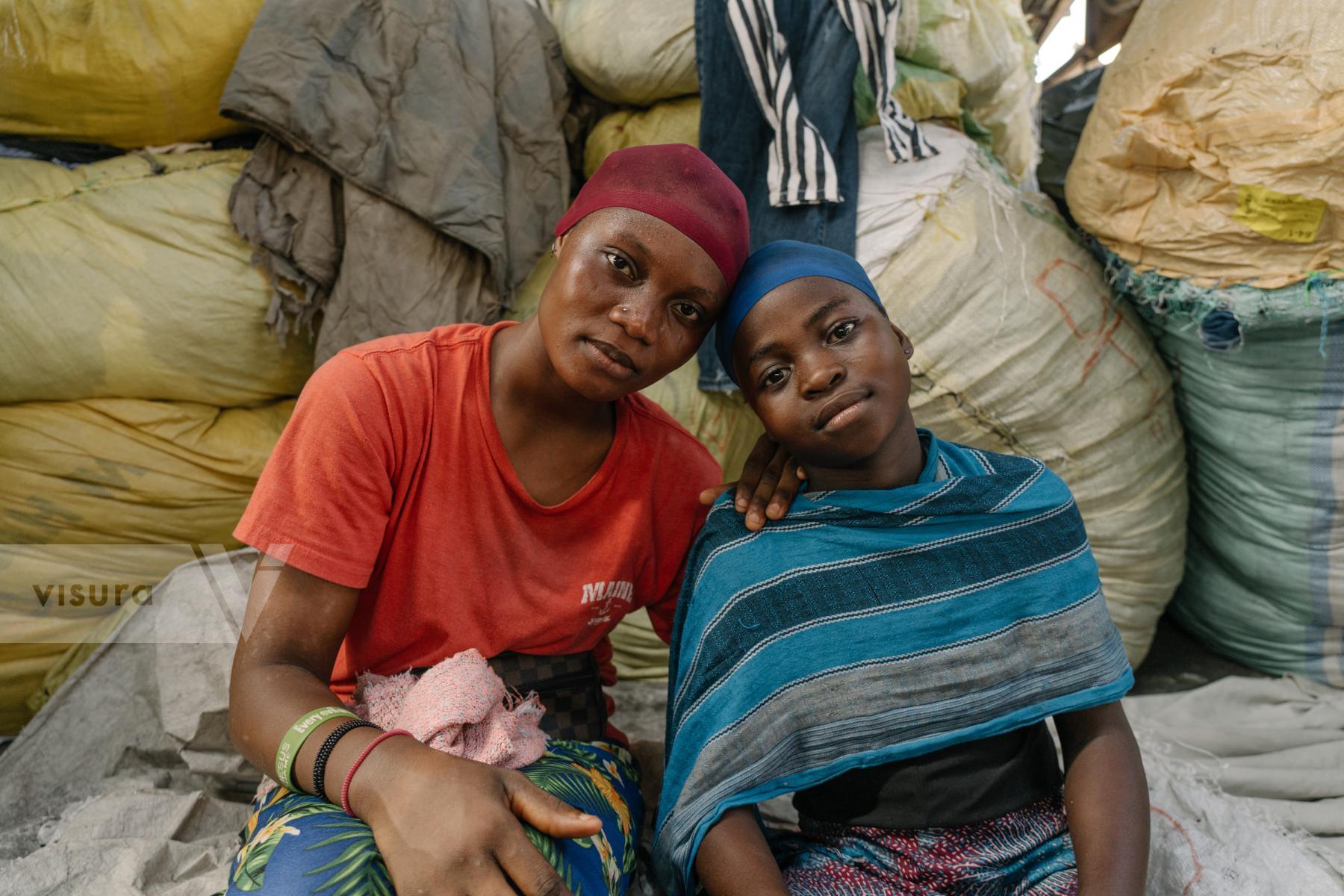
Amina (left) and her younger sister Fataya (right) work as kayayei (female head porters) at Kantamanto, a second-hand clothes market in Accra. The sisters live in Accra’s largest slum, Agbogbloshie, sharing a single room with ten other kayayei in Accra, Ghana on May 15, 2024. Ghana
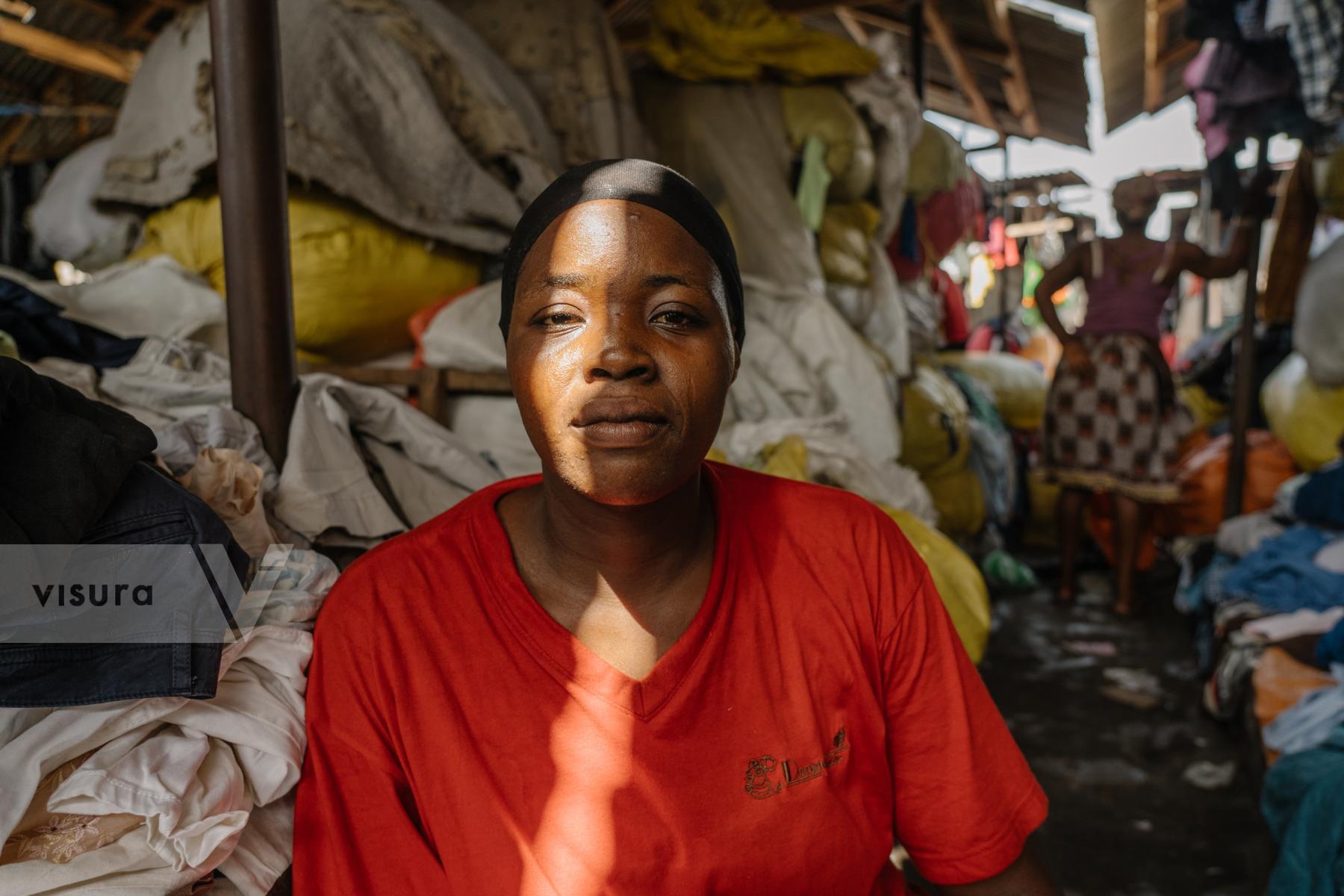
Saida works as a kayayei (female head porter) at Kantamanto second-hand clothes market in Accra. She says that the loads she carries are very heavy and that she has body aches, particularly in her neck and spine in Accra, Ghana on May 15, 2024. Ghana
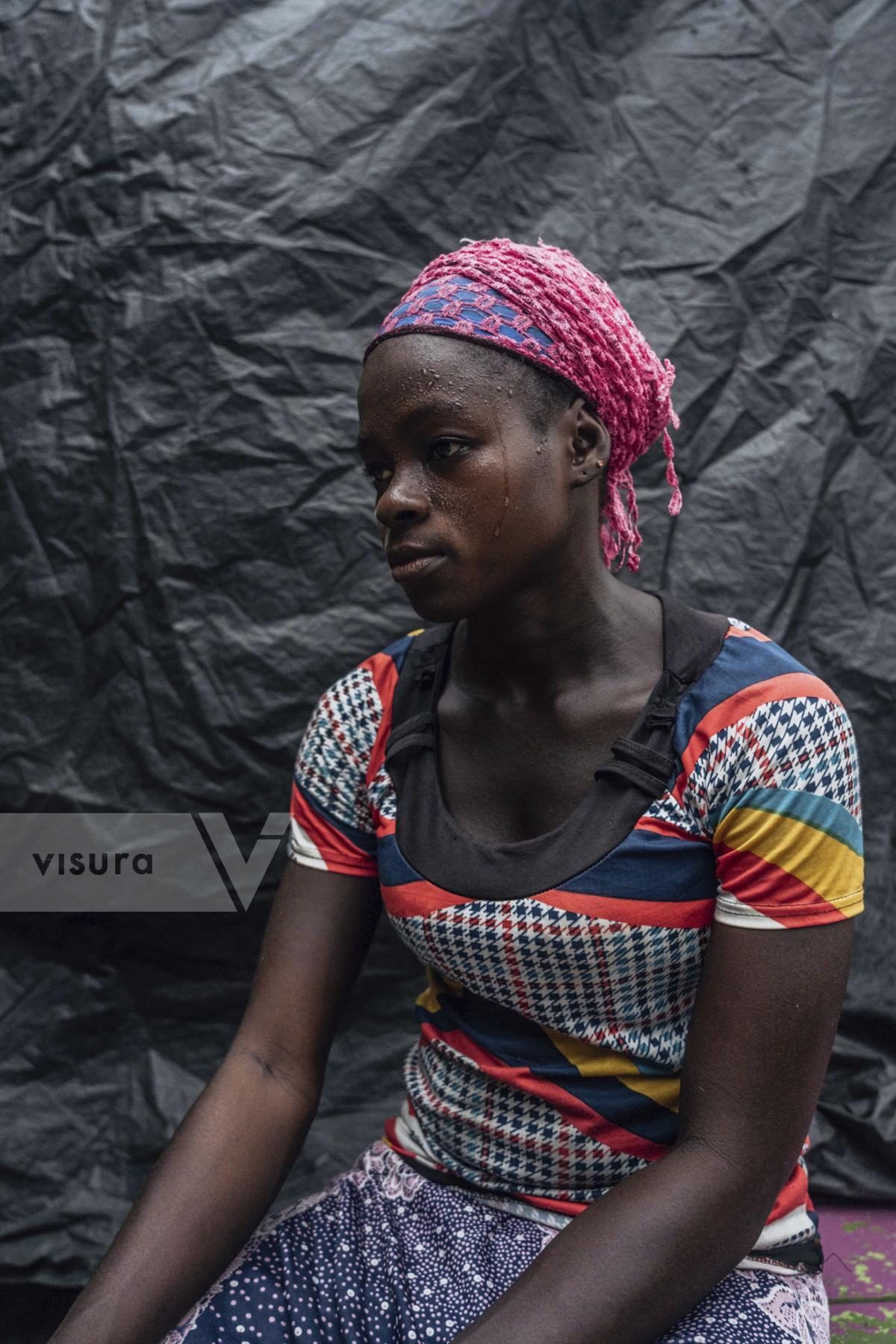
Rahina is having a rest after carrying a heavy load in the sweltering heat
throughout Accra’s busy market for as little as few cedis a day (less than a dollar).
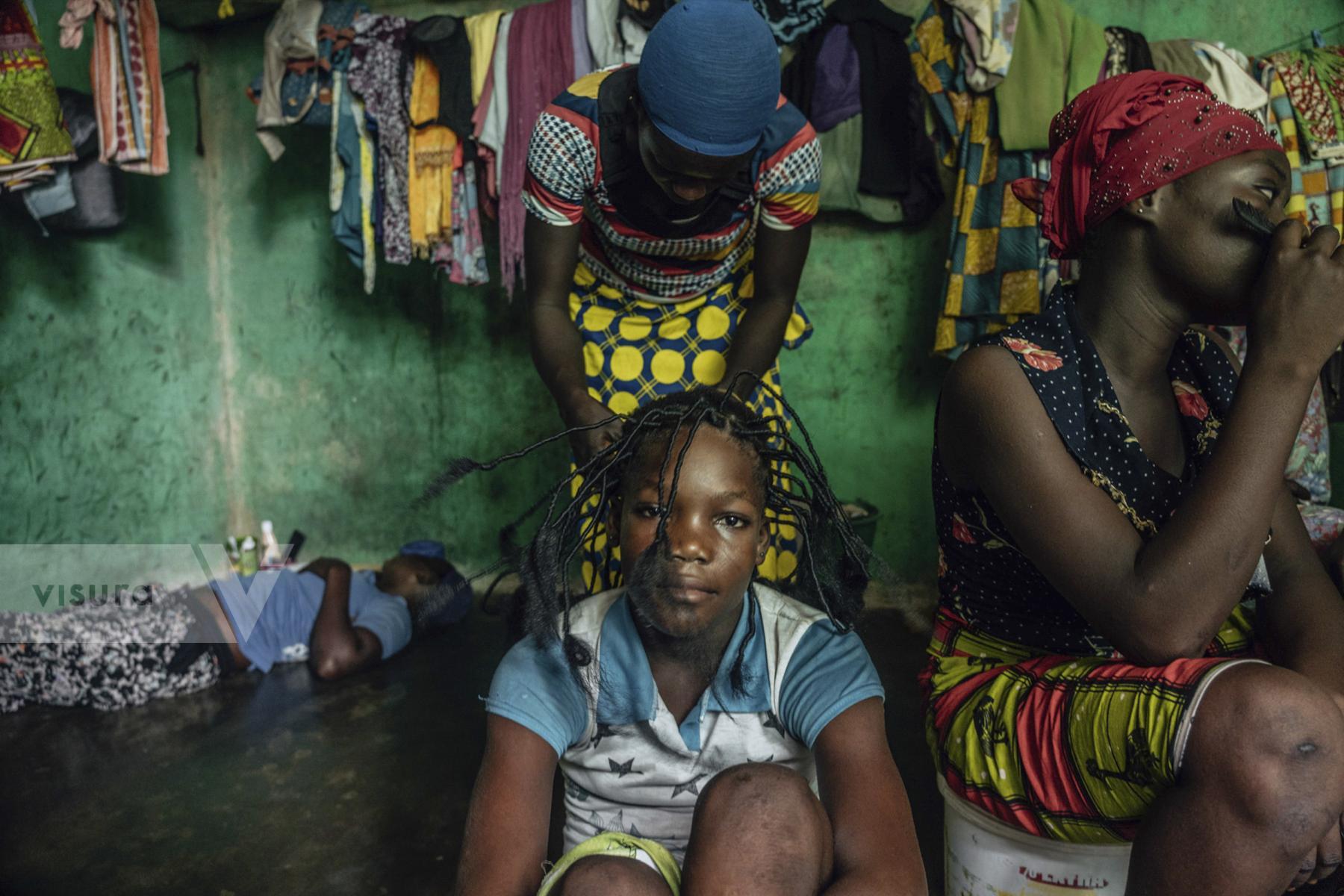
Rahina braids her roommate’s hair on Sunday afternoon before the evening prayer.
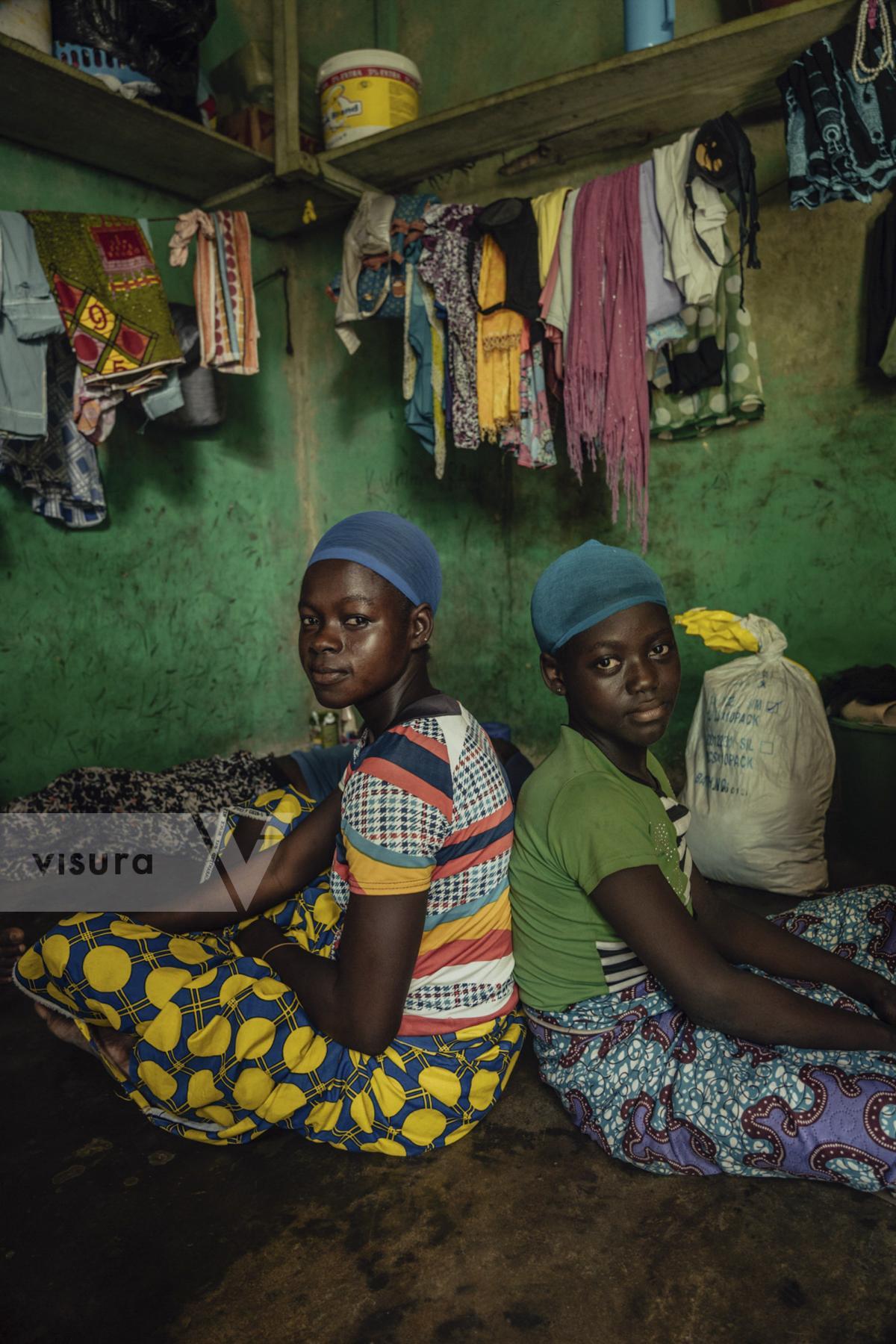
Rahina and her younger sister Rafia work as a kayayei (female head porter) at the biggest second hand market Kantamanto in Accra. They both live in the Accra’s largest slum Agbogbloshie and share one room with another 10 kayayei girls. Ghana, Agbogbloshie on March 1, 2020.
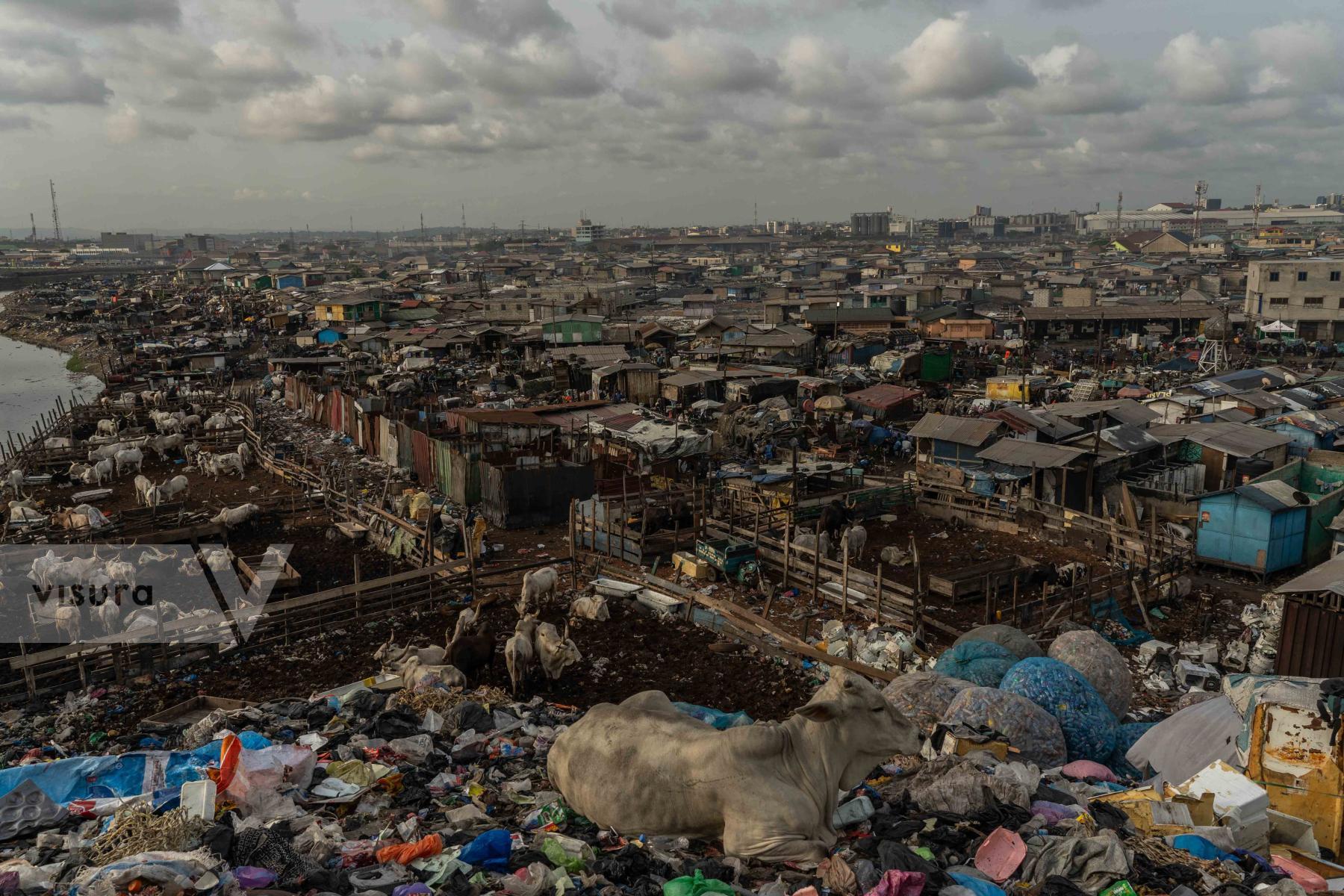
A cow rests atop a man-made mountain of waste in the heart of Agbogbloshie, a densely populated slum, home to an estimated 80,000 residents in Accra, Ghana on May 8, 2024.
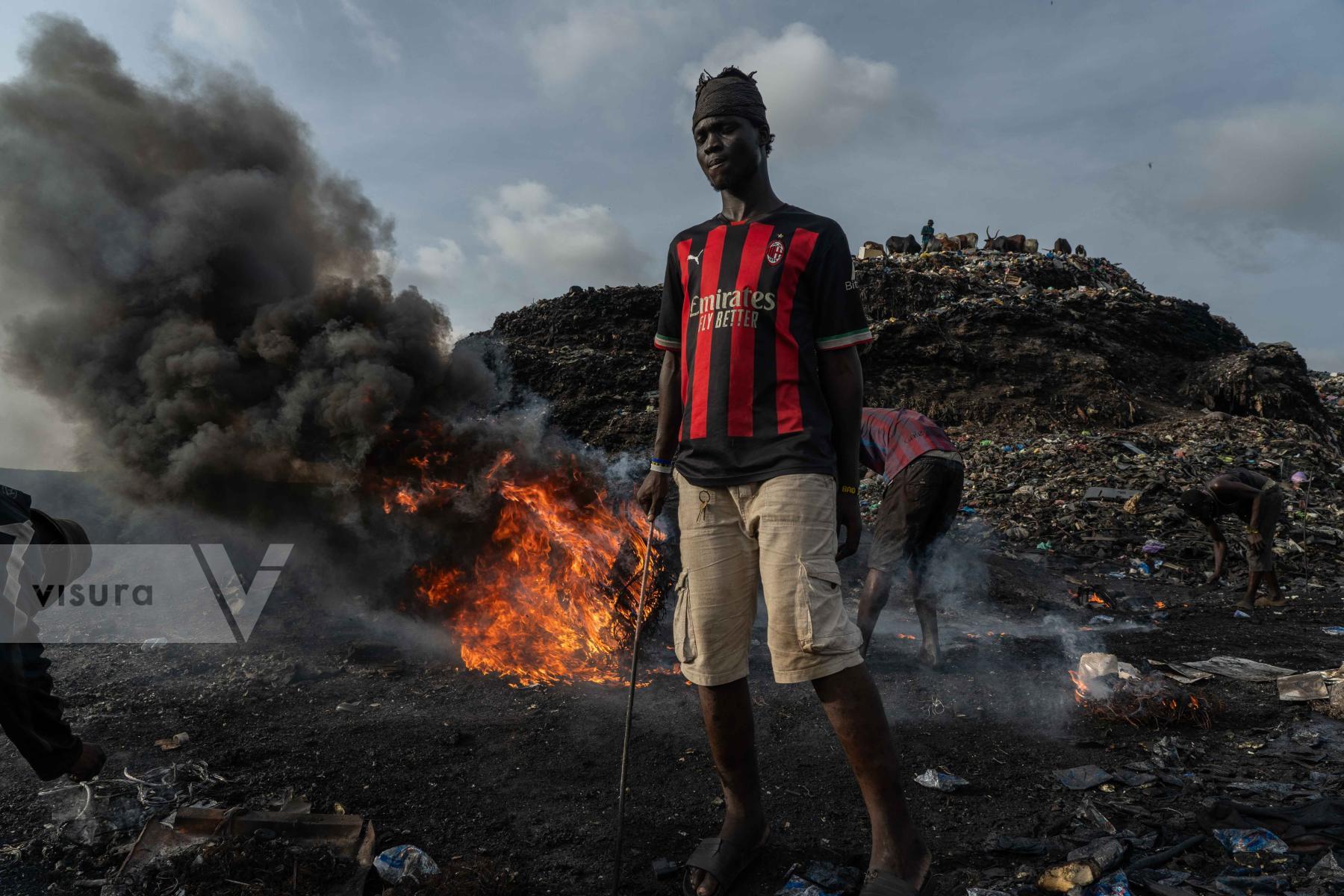
Young workers at Agbogbloshie e-waste site burn electronic waste to extract valuable metals, primarily copper, which they then sell for a small income in Accra, Ghana on May 8, 2024.
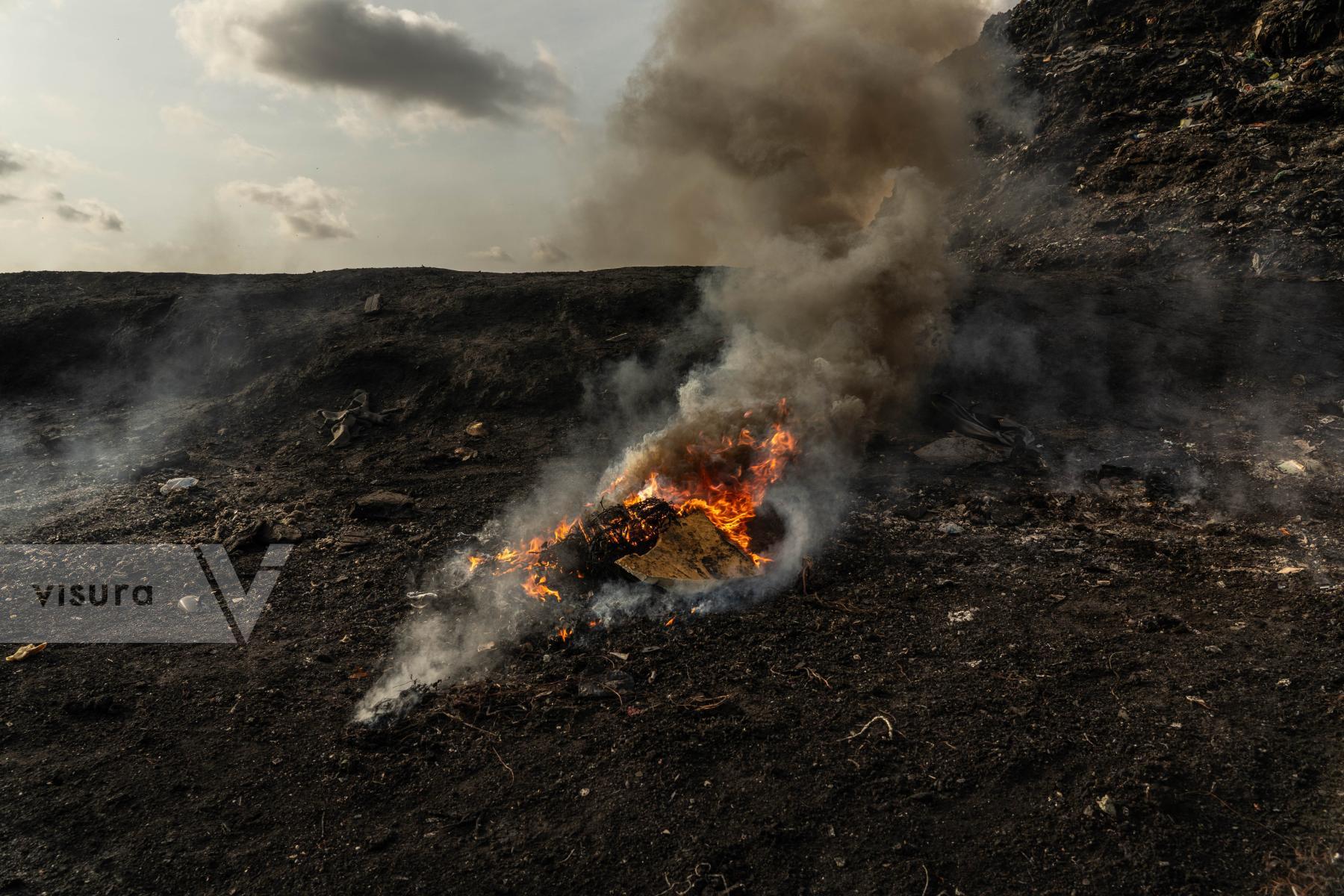
The burning of e-waste at Agbogbloshie releases toxic chemicals into the air in Accra, Ghana, on May 8, 2024.
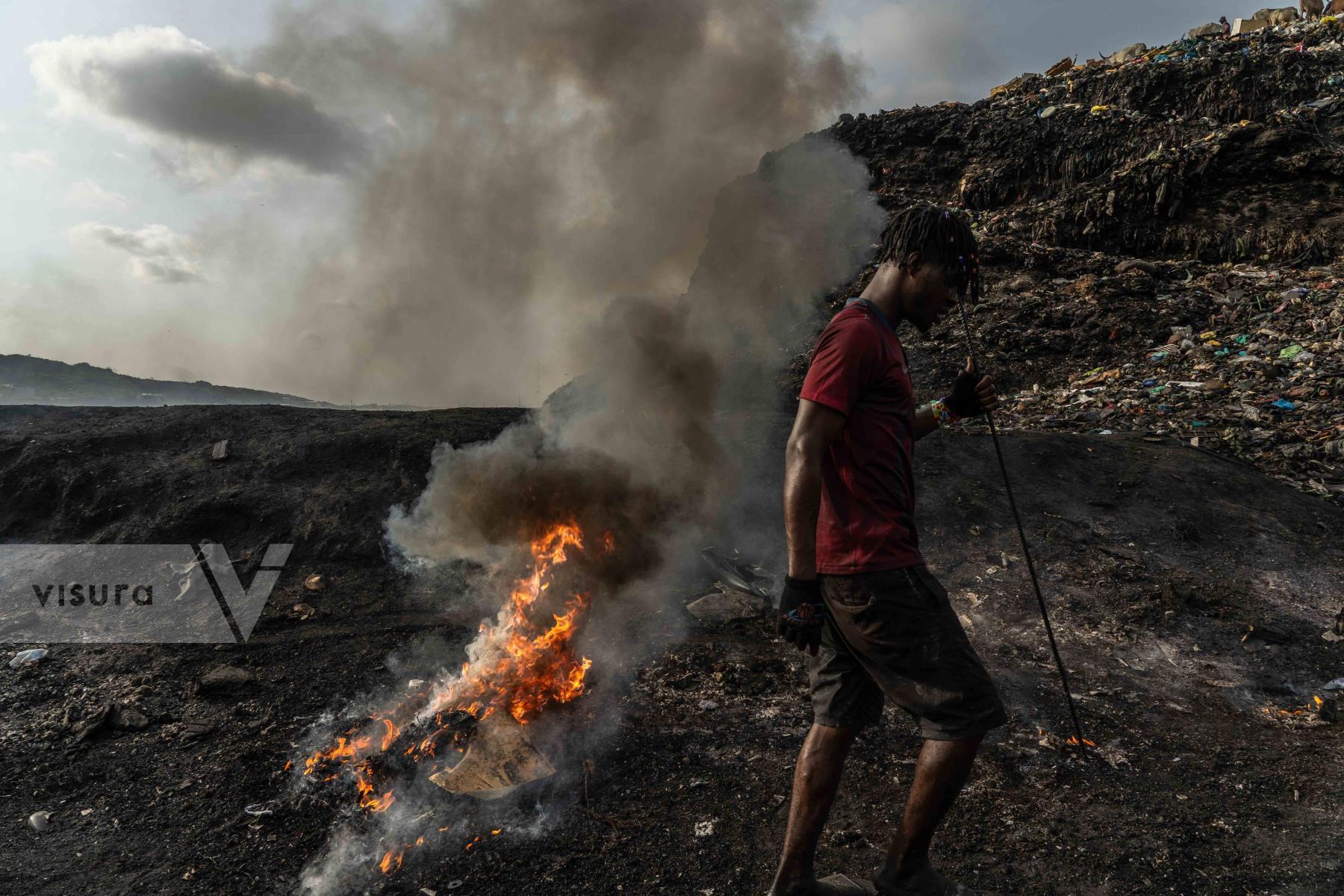
Young workers at the Agbogbloshie e-waste site burn electronic waste to extract valuable metals in Accra, Ghana, on May 8, 2024.
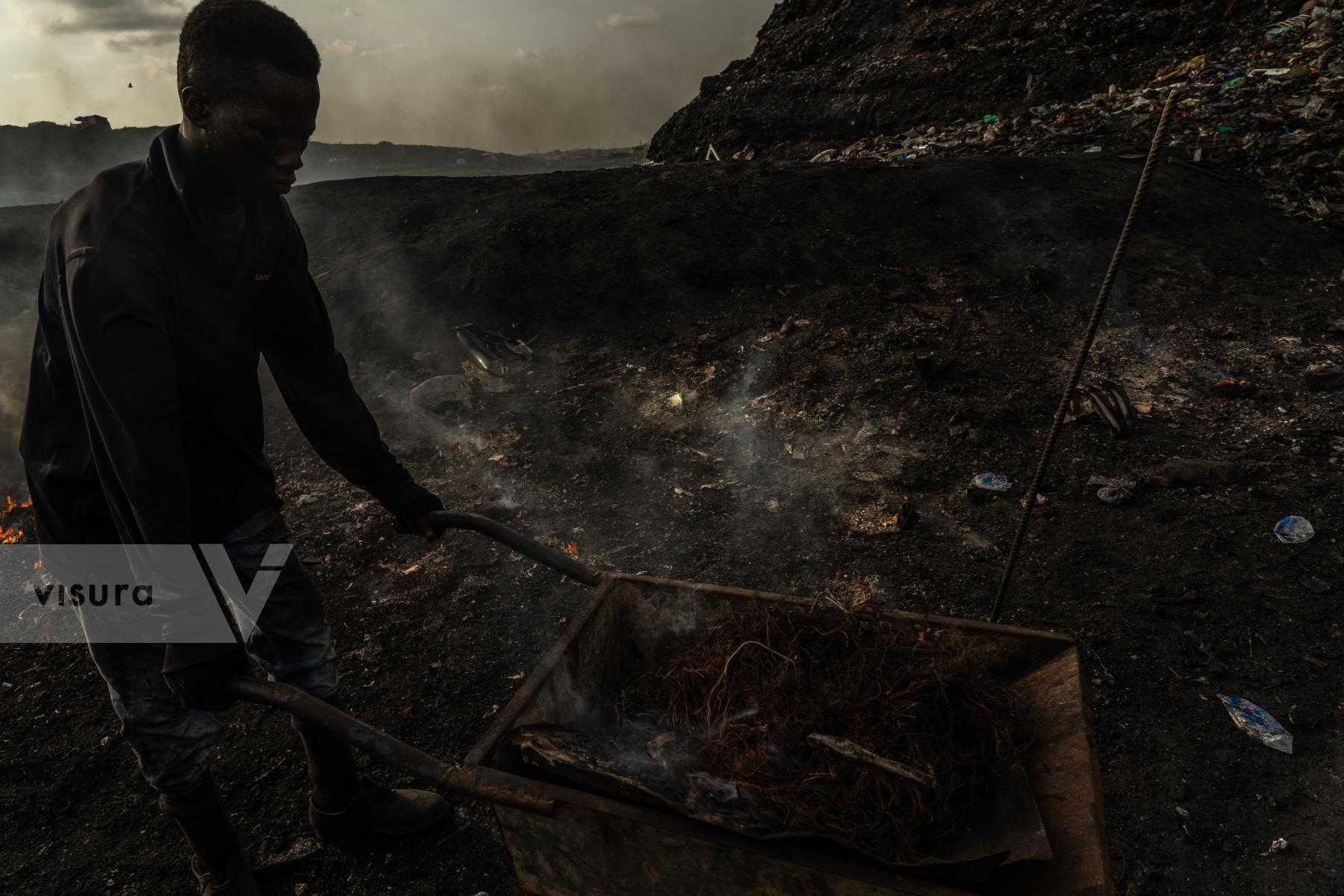
A young worker at the Agbogbloshie e-waste site uses a wheelbarrow to transport copper extracted from burning electronic wires, which he then resells in Accra, Ghana, on May 8, 2024.
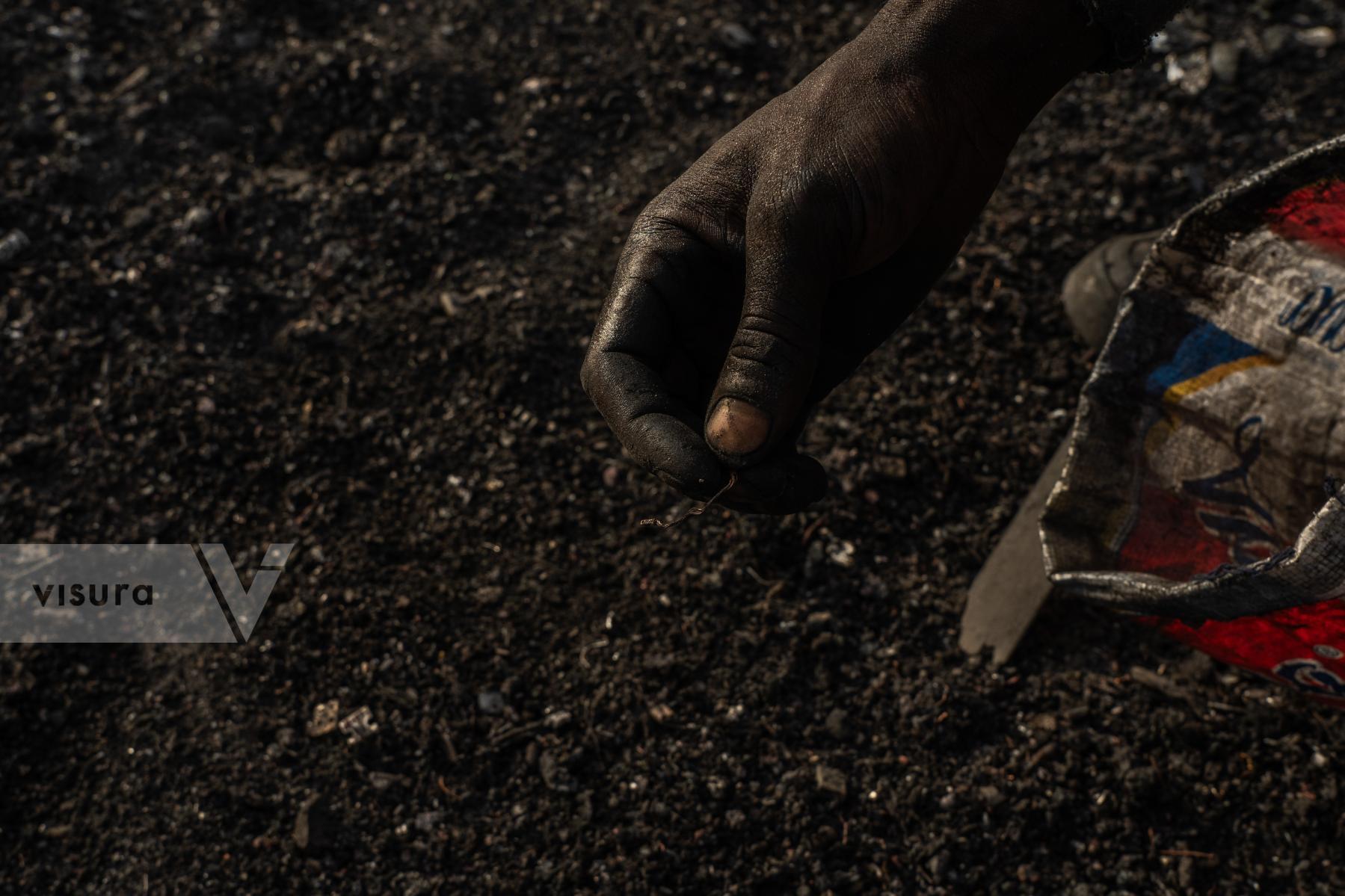
A small piece of copper that has been extracted from burning e-waste at Agbogbloshie, one of the world's largest e-waste dumping sites in Accra, Ghana, on May 8, 2024.
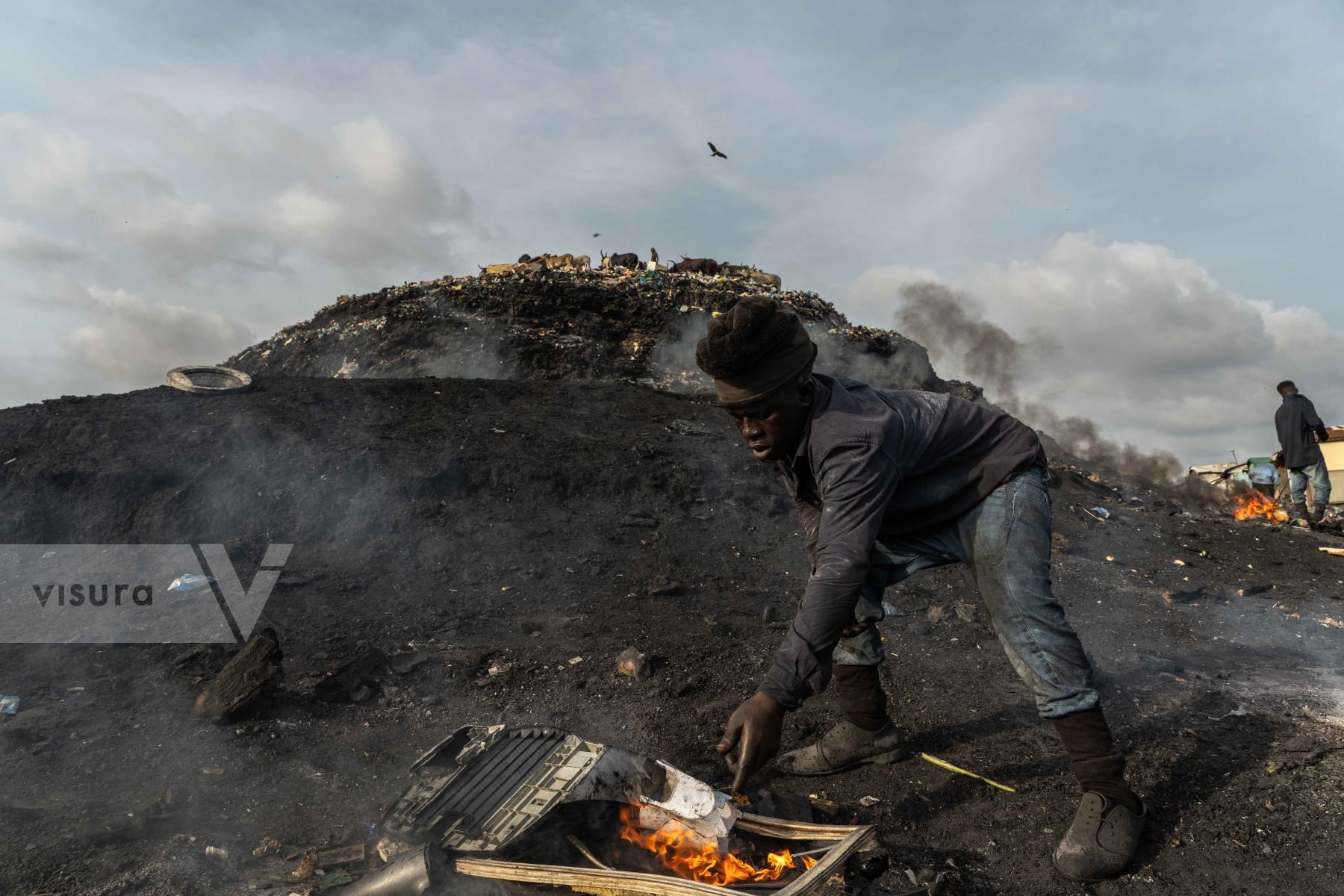
Burning electronic devices to extract copper is a common yet hazardous practice at Agbogbloshie in Accra, Ghana, on May 8, 2024.
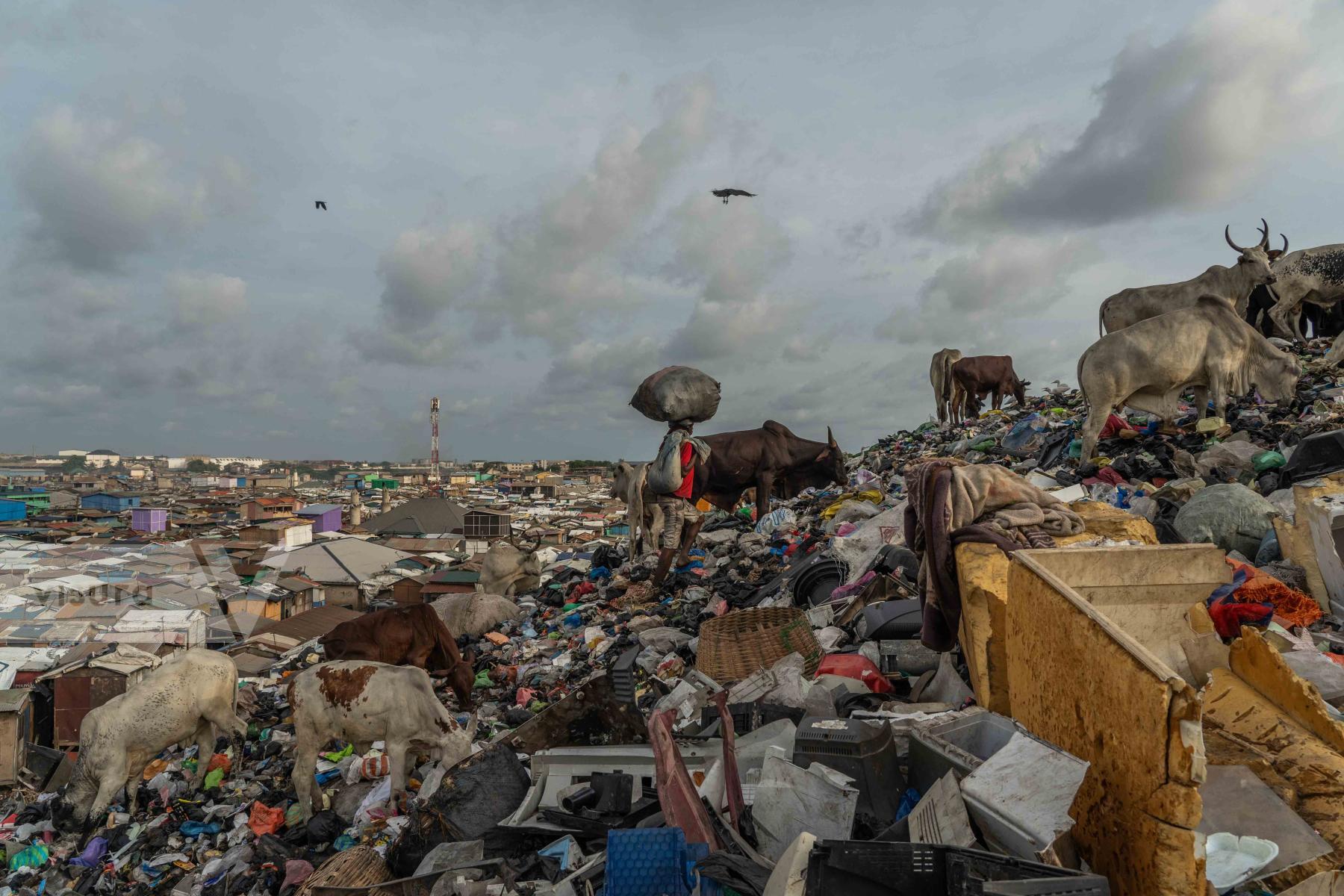
Cows graze on the top of the man-made mountain of waste in the middle of the densely populated Agbobloshie slum, which poses hazardous health risks to its residents in Accra, Ghana, on May 8, 2024.
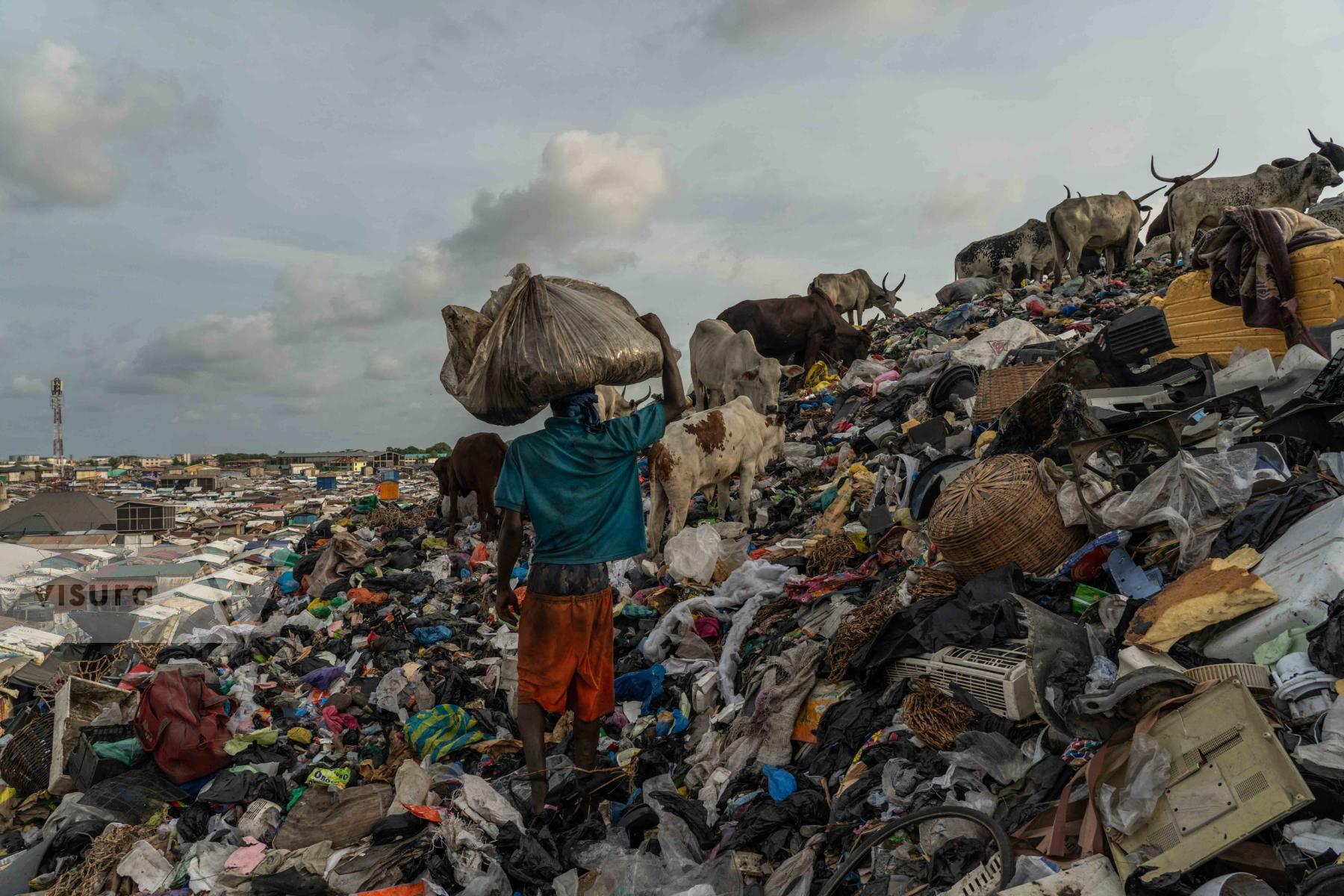
A man carries trash to dispose of atop the man-made mountain of waste in Agbogbloshie in Accra, Ghana on May 8, 2024.
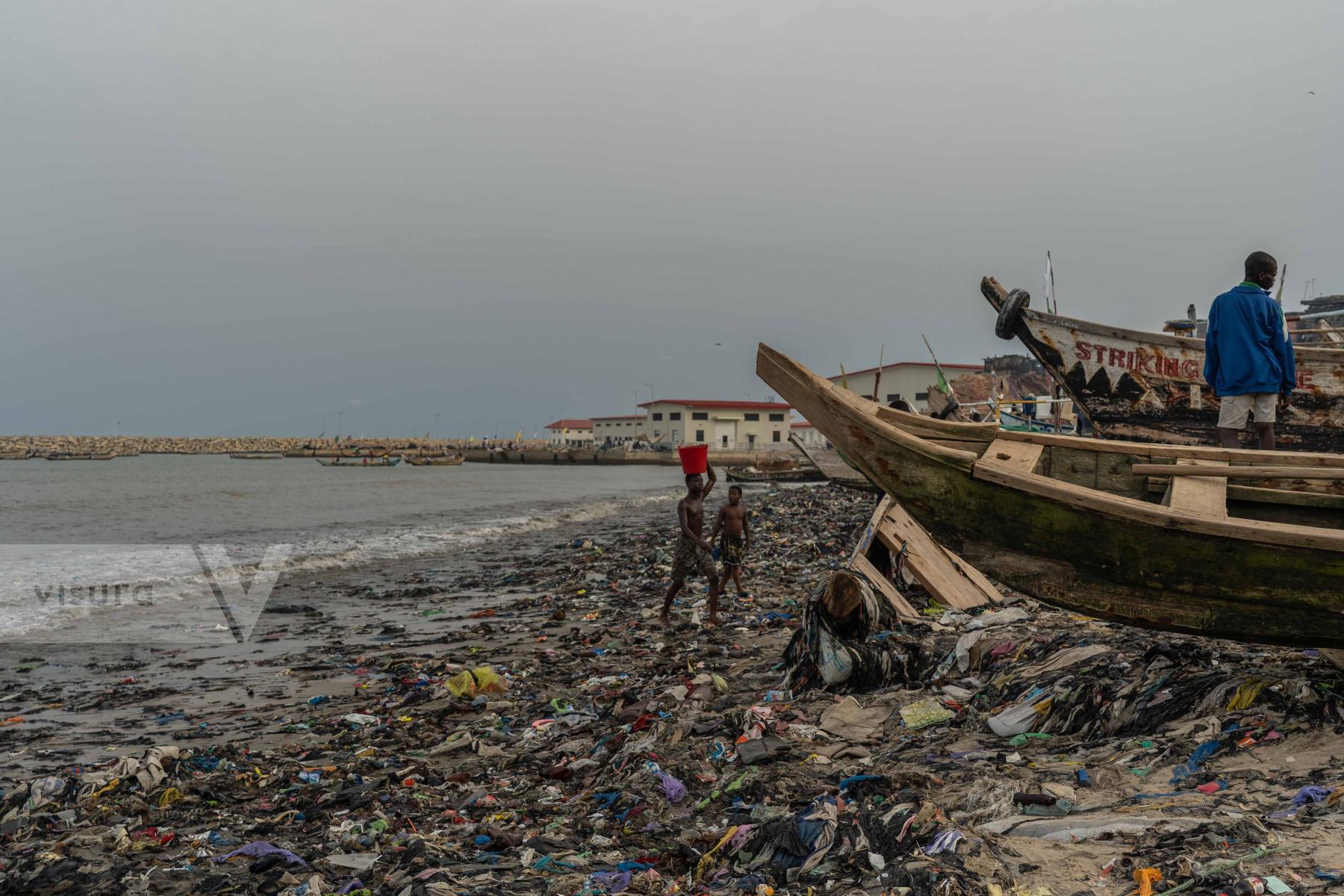
Kids are walking on the heavily polluted Jamestown Beach in Accra, littered with textile waste and plastic debris. Local fishing communities are struggling as the polluted waters affect fish populations, and the hazardous conditions threaten their health and livelihoods in Accra, Ghana on May 17, 2024.
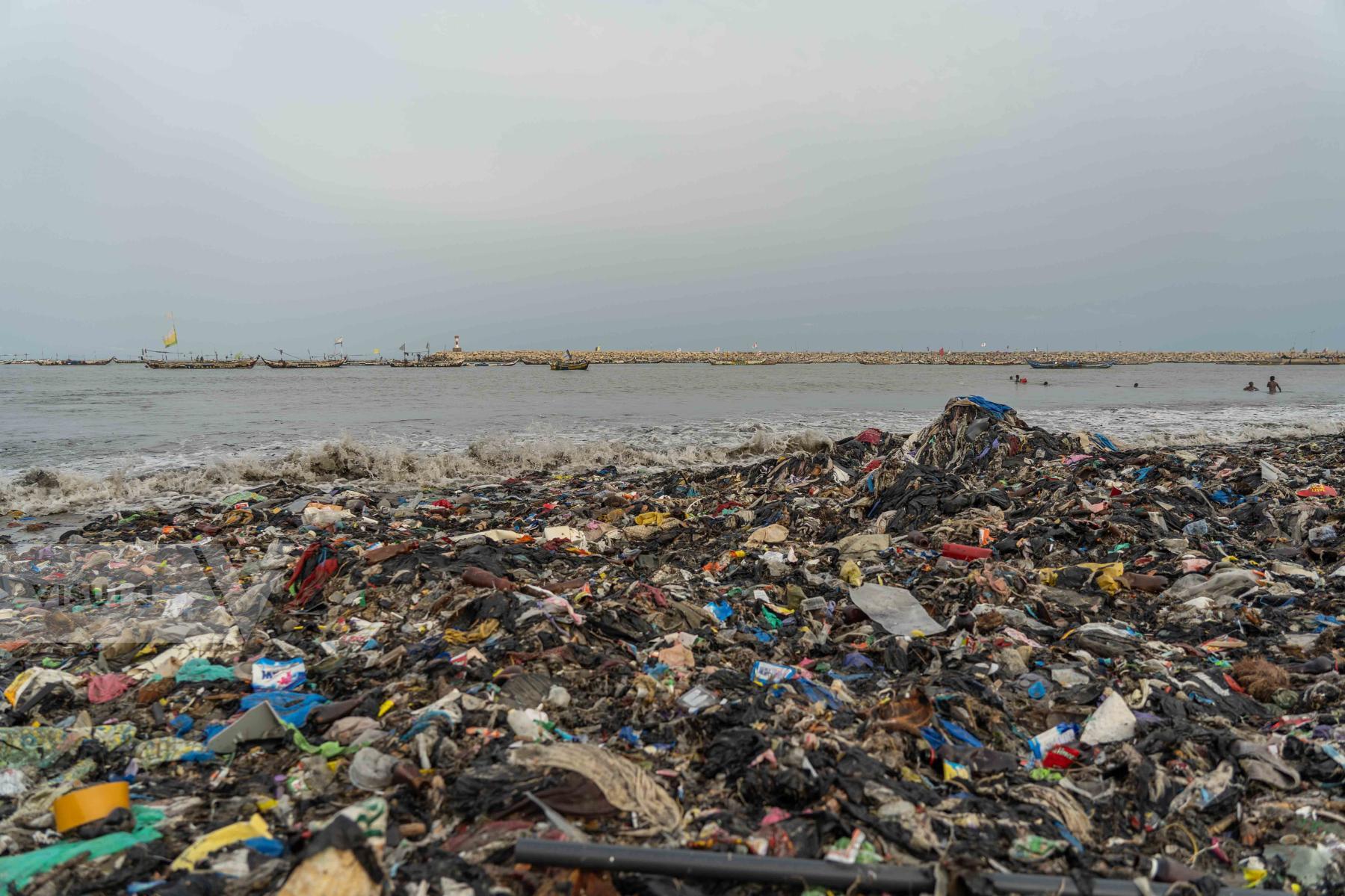
Heavily polluted Jamestown Beach in Accra. The textile waste, often originating from the nearby market Kantamanto, accumulates alongside plastic trash contaminating the sand and water. The relentless tide brings in more waste each day, further exacerbating the pollution in Accra, Ghana on May 17, 2024.
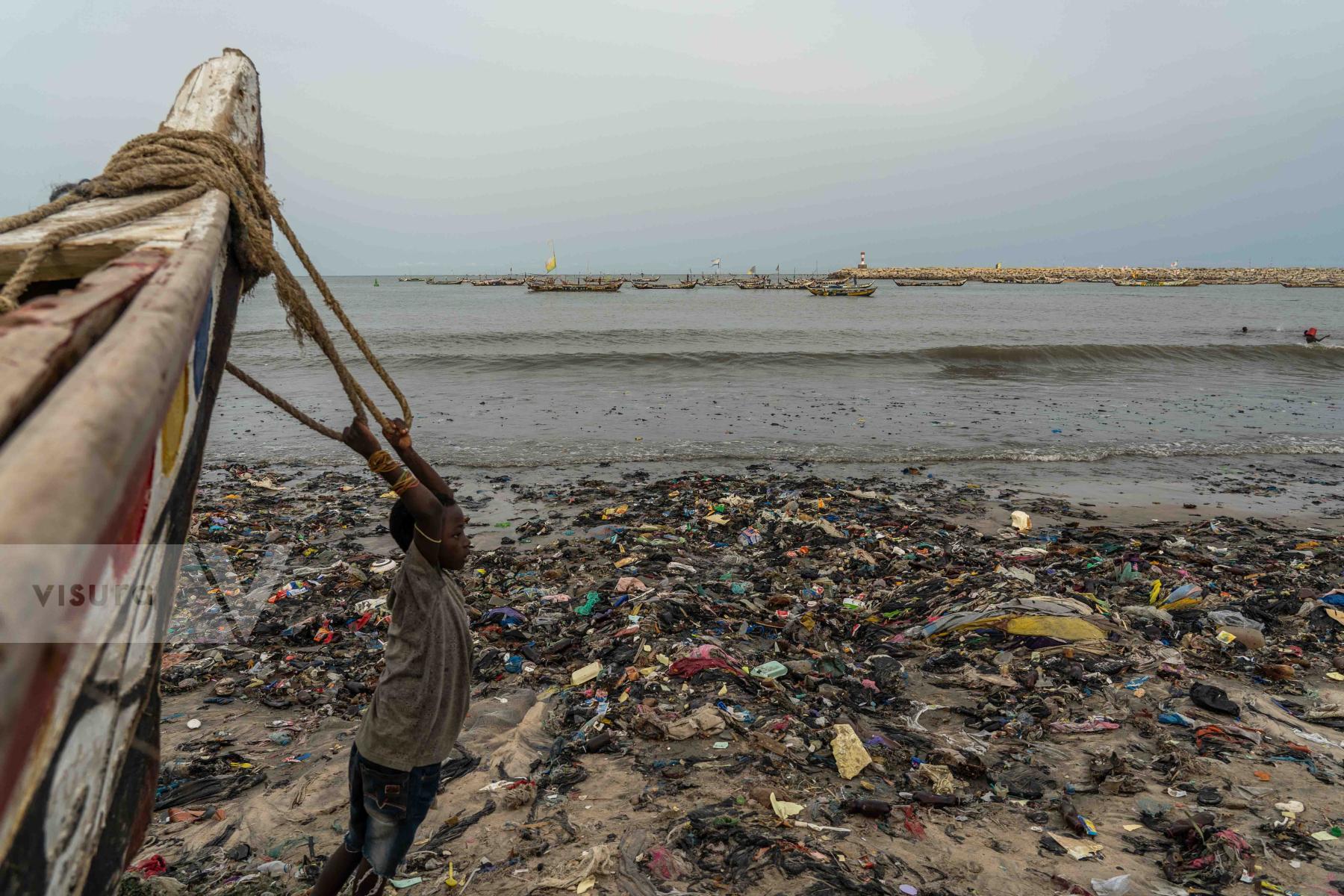
A child plays on a heavily polluted Jamestown beach in Accra, Ghana on May 17, 2024.
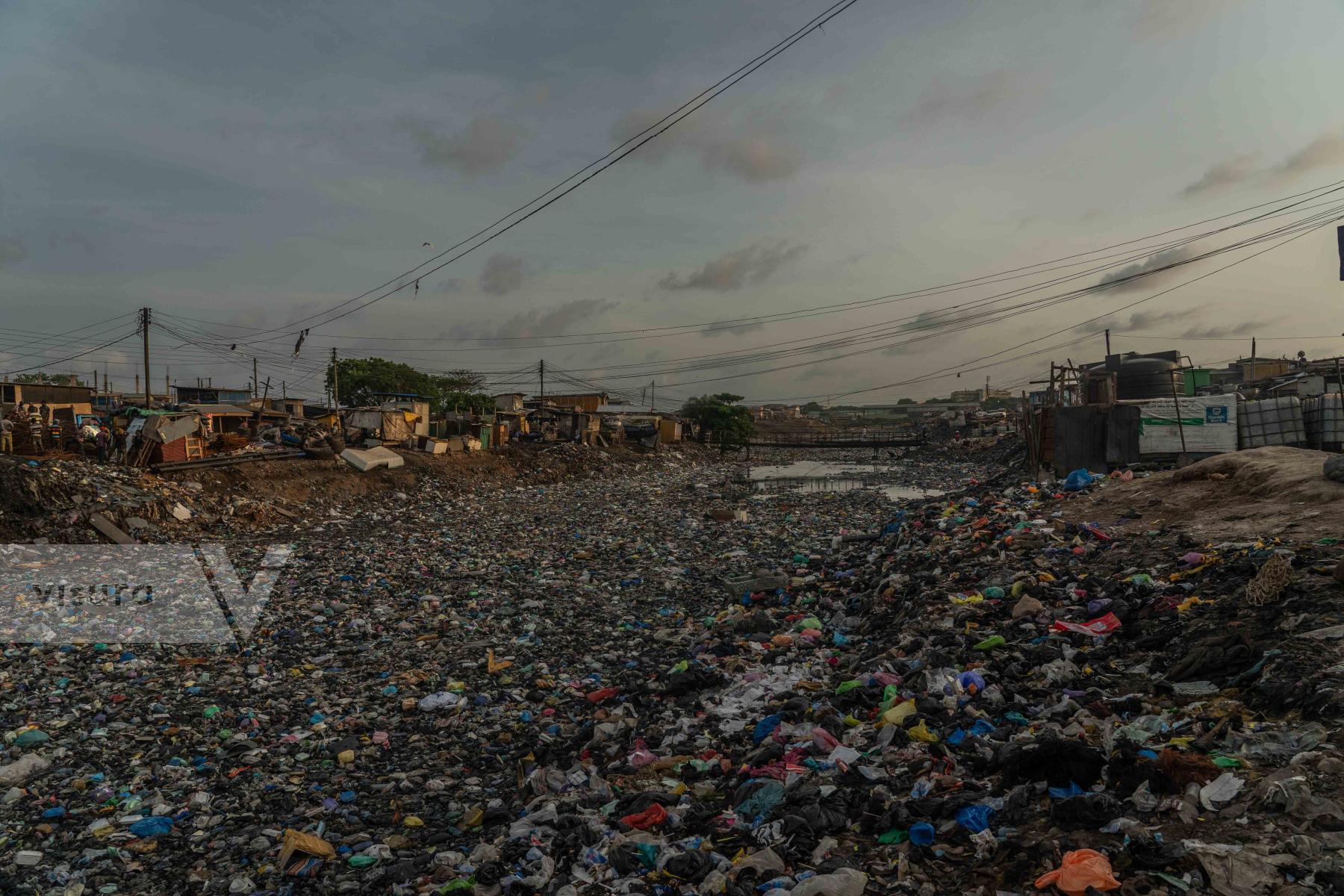
The heavy pollution has led to the destruction of aquatic life in the Korle Bu Lagoon. Fish and other marine organisms cannot survive in the toxic environment, leading to a collapse of local biodiversity in Accra, Ghana on May 8, 2024.





























